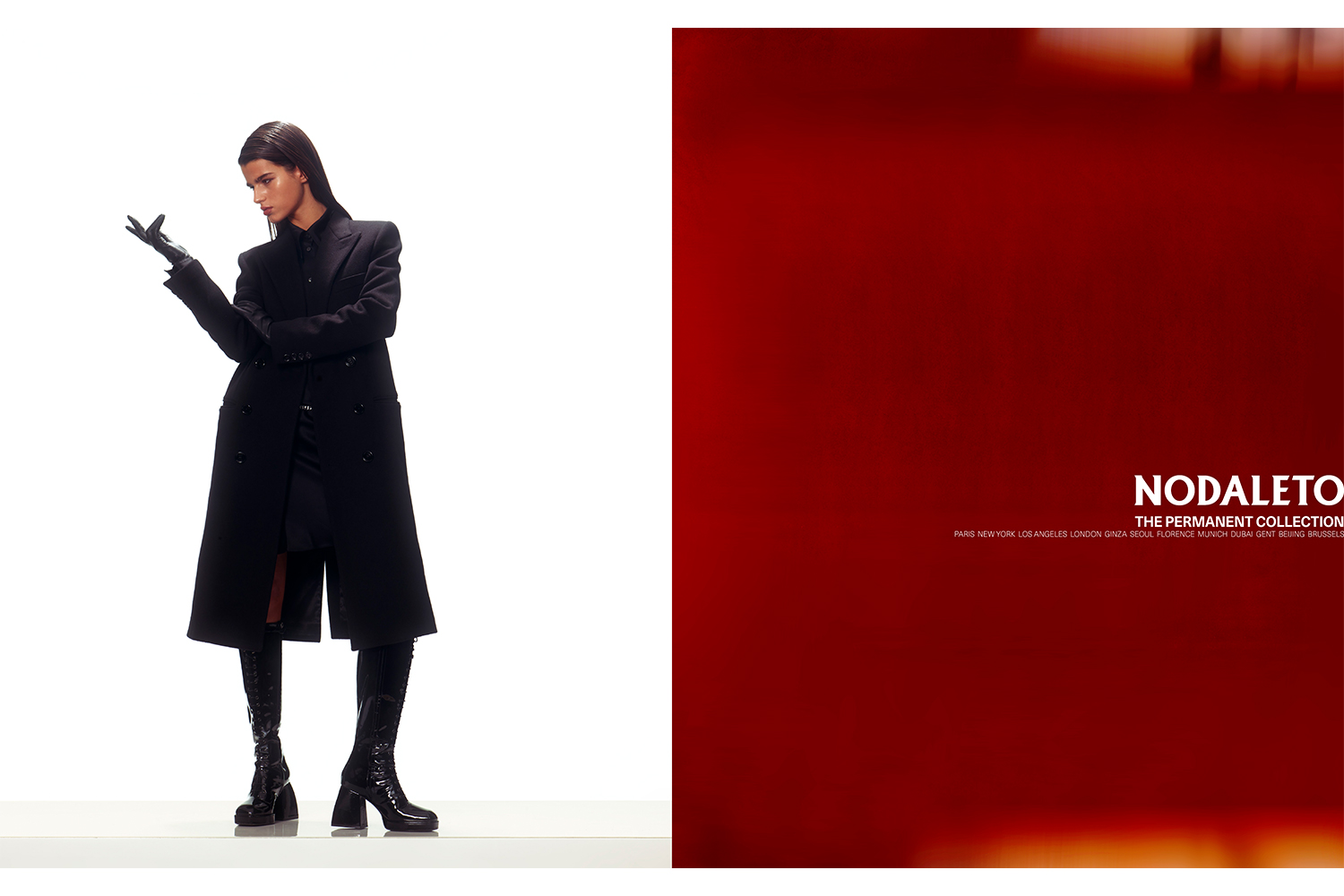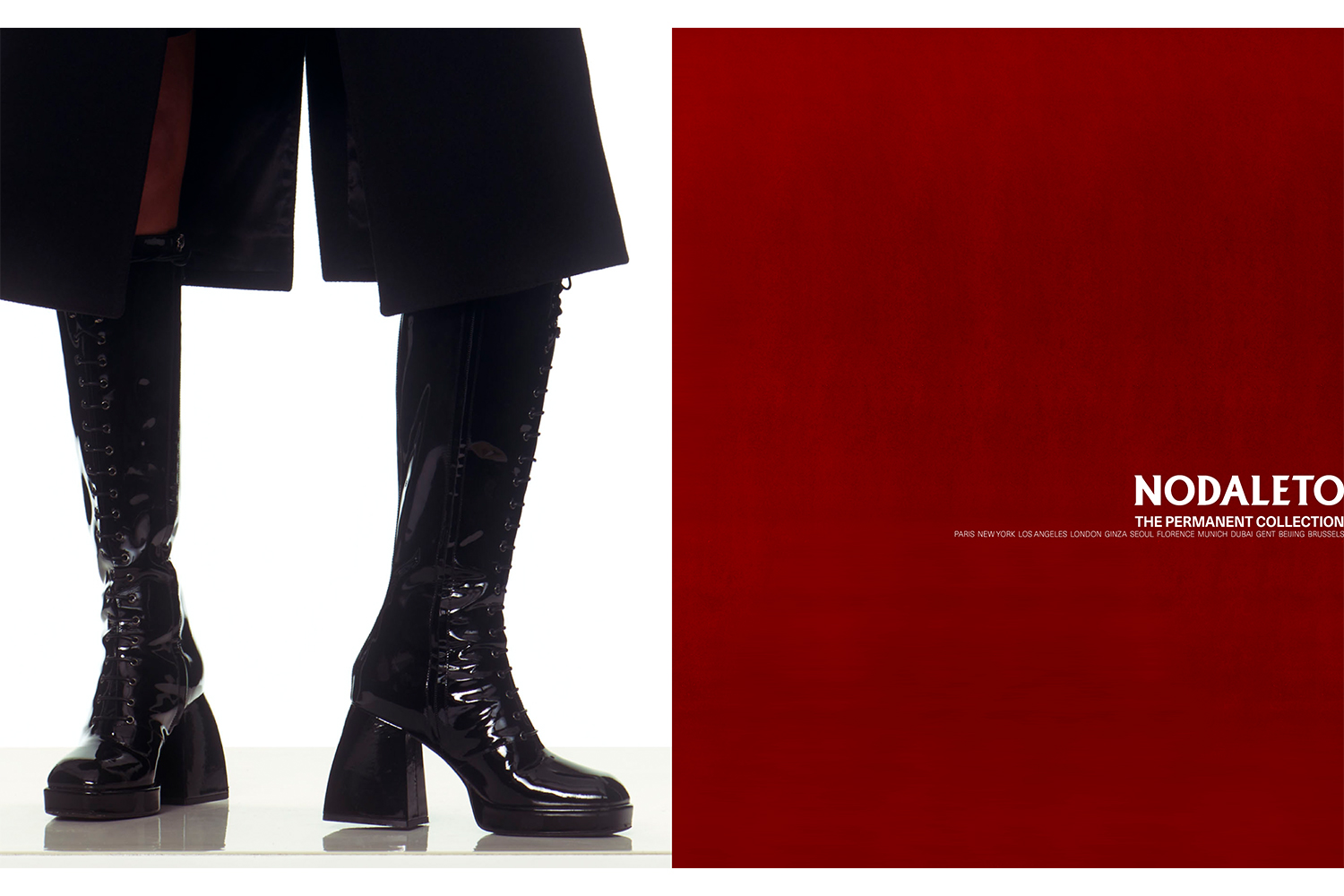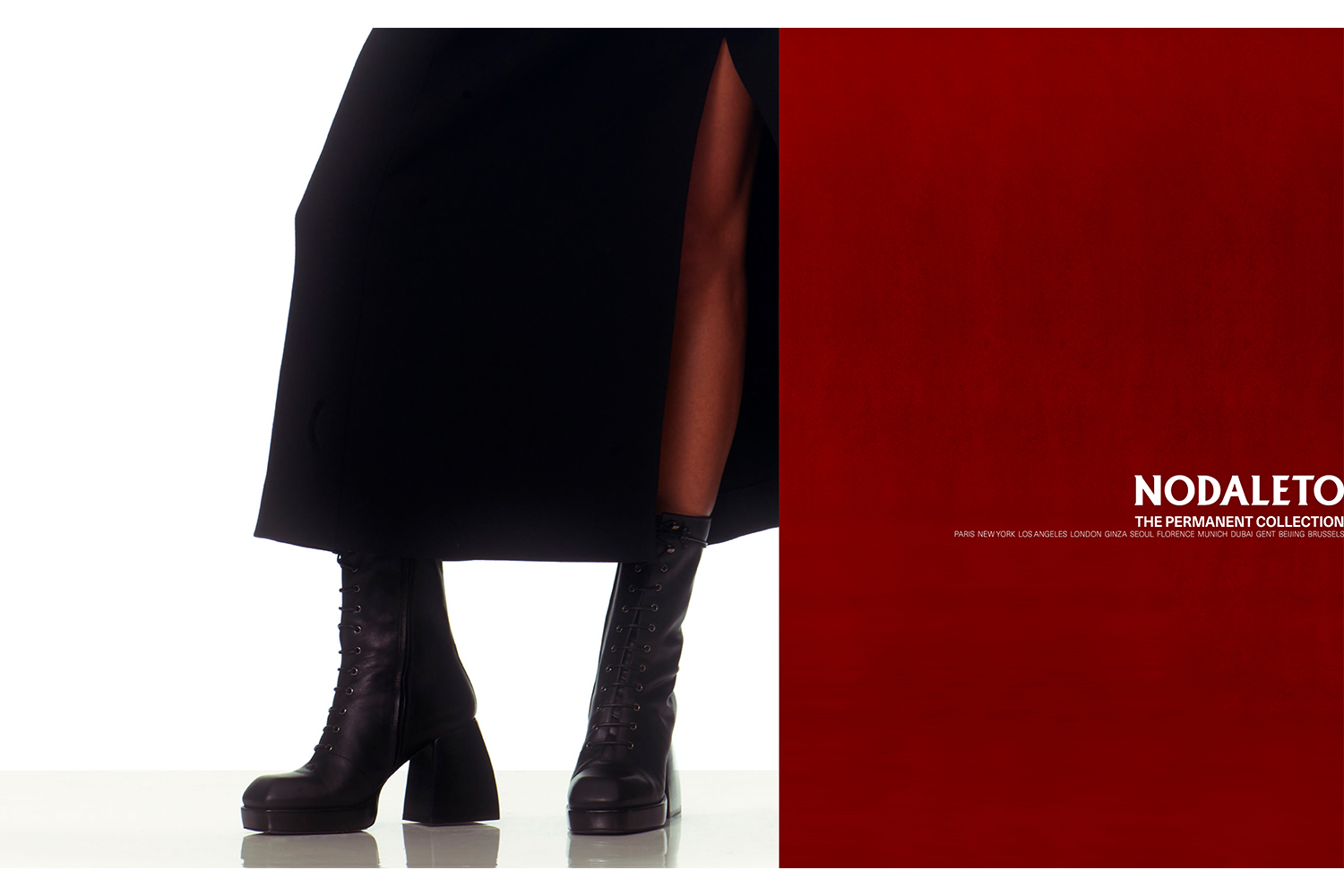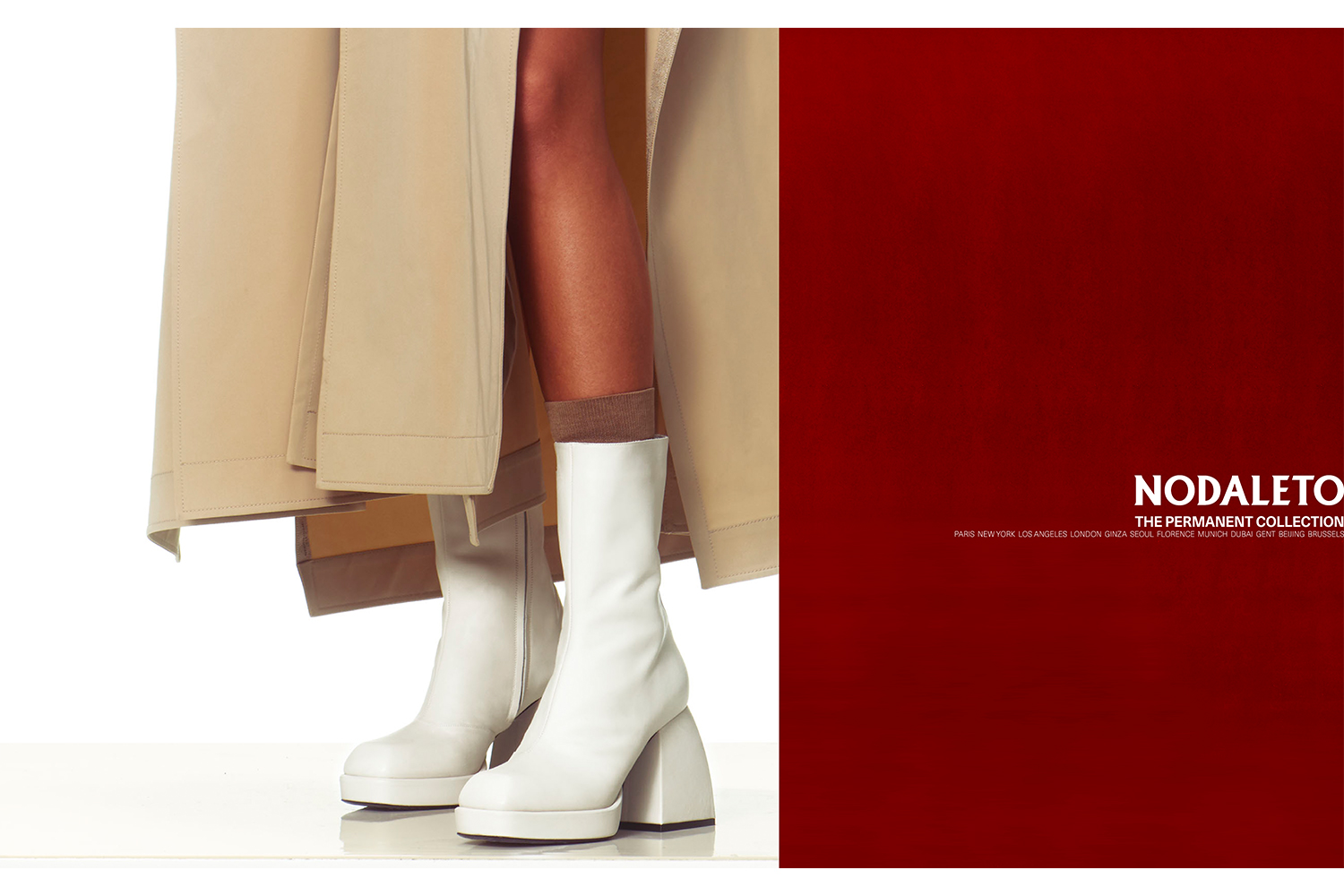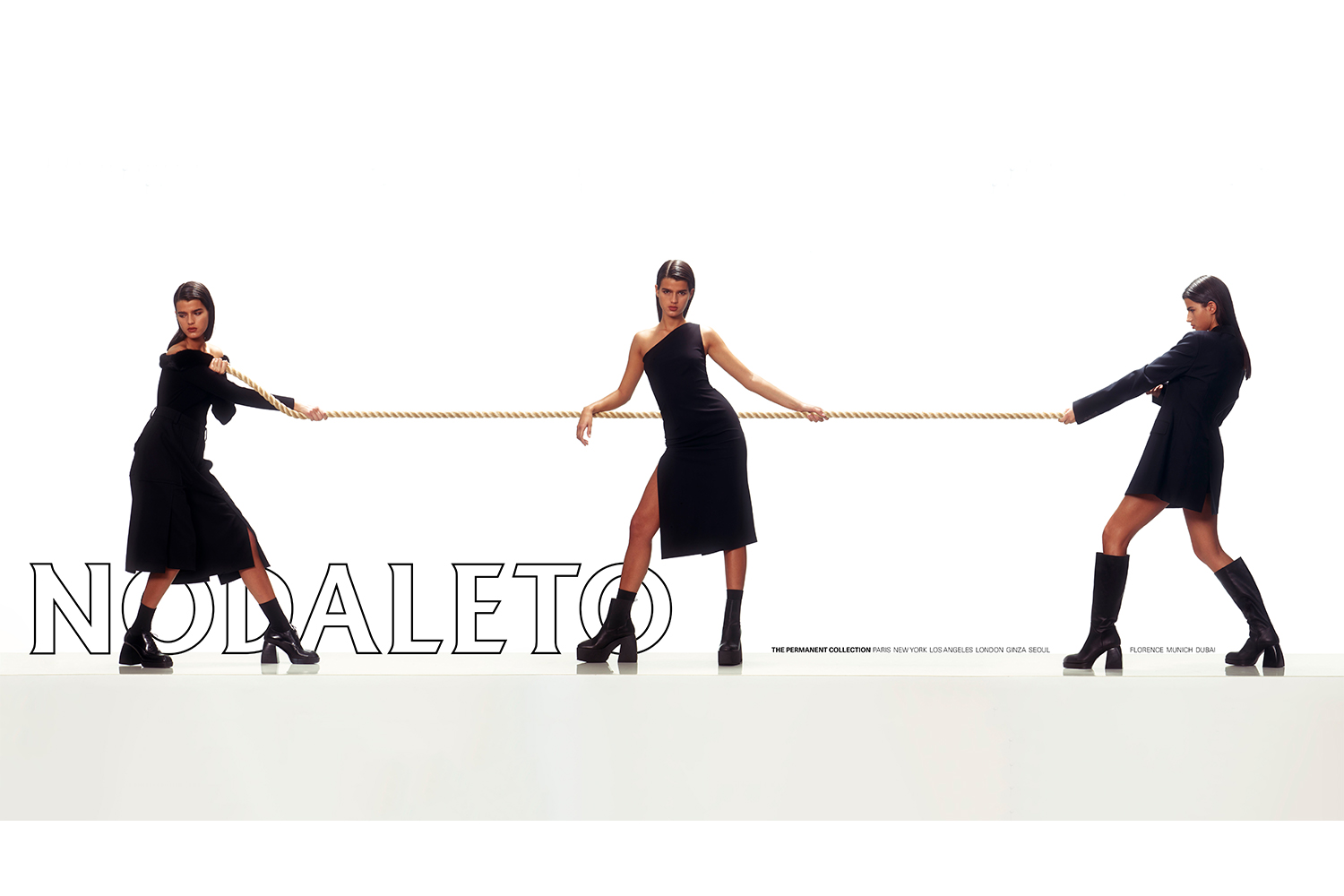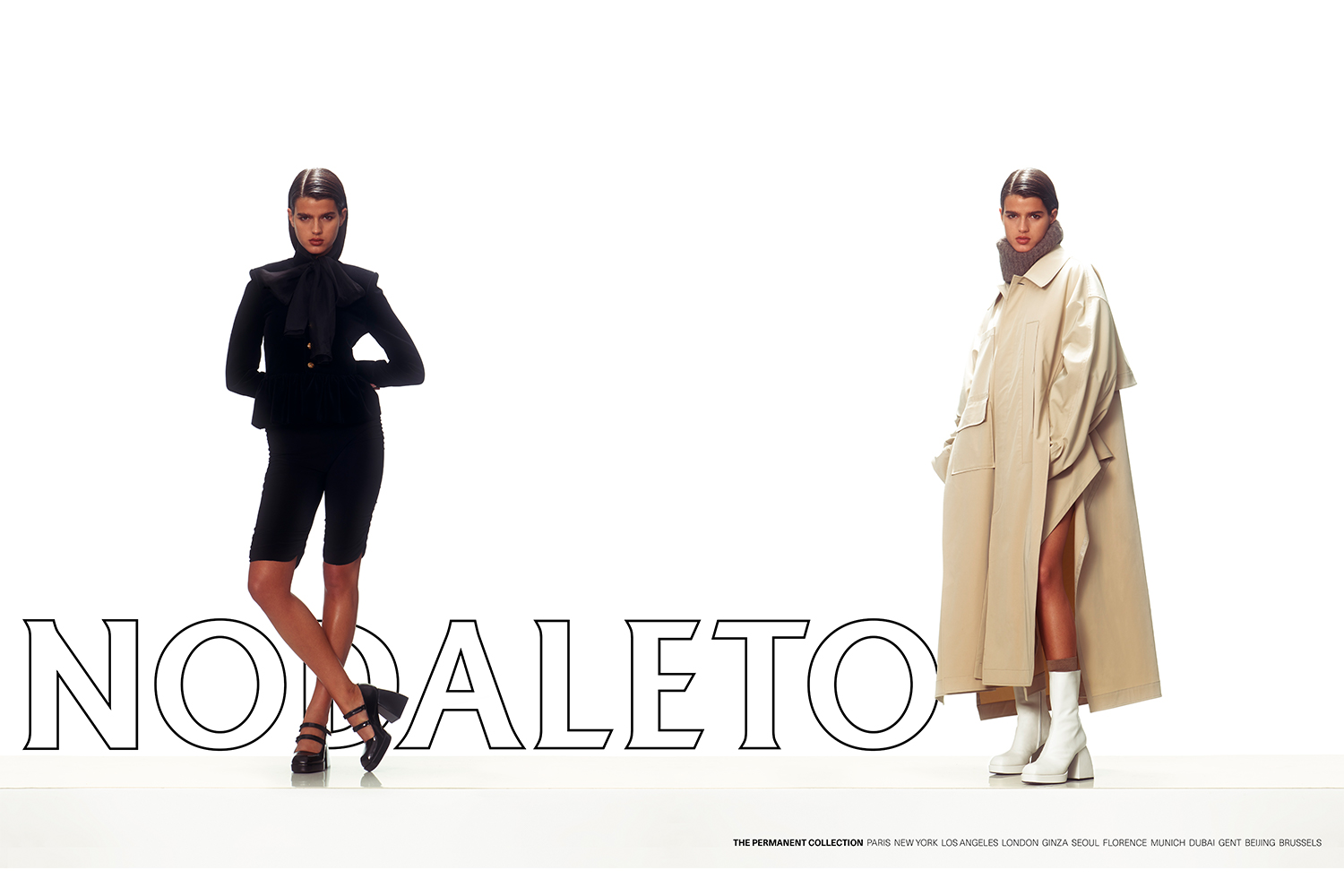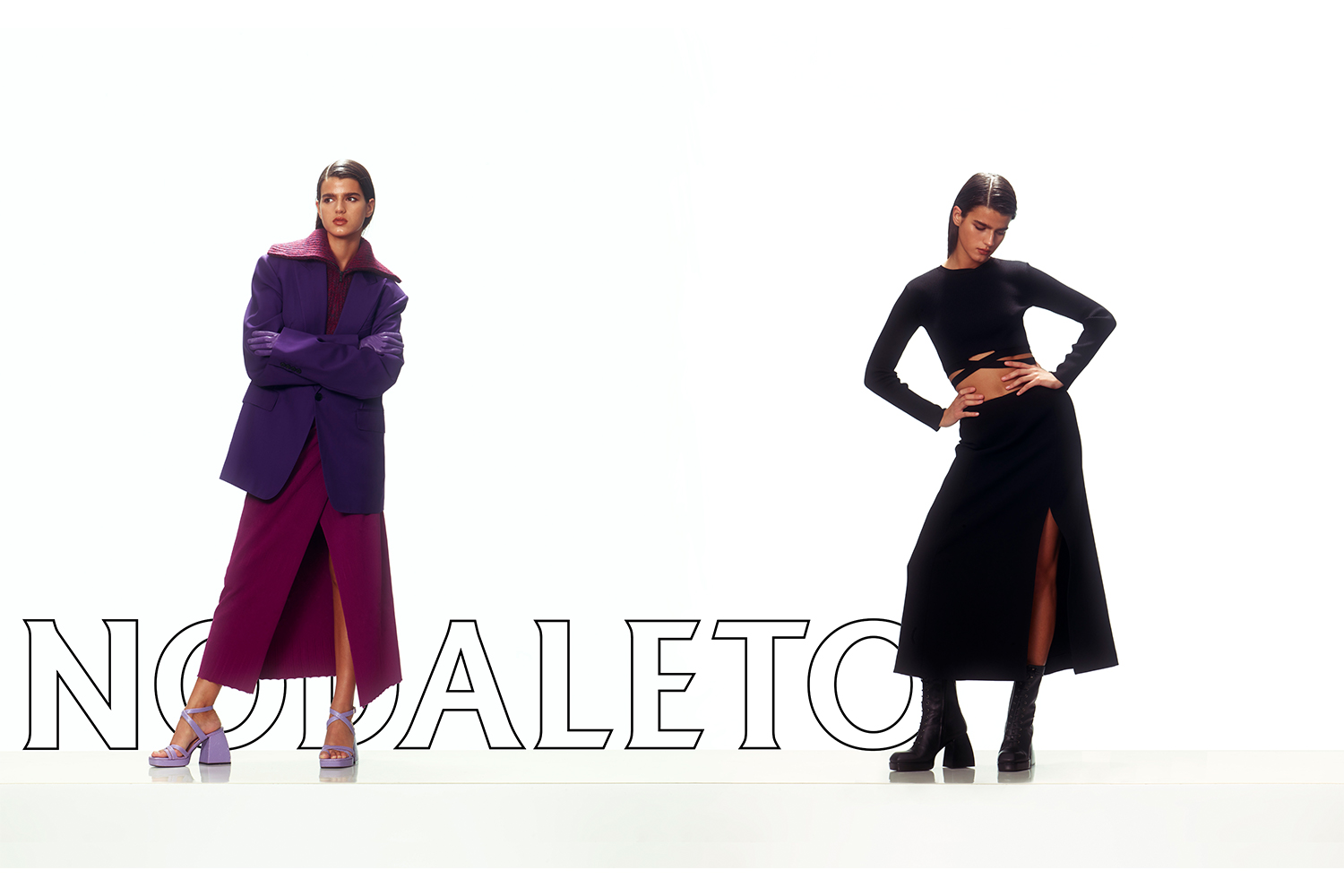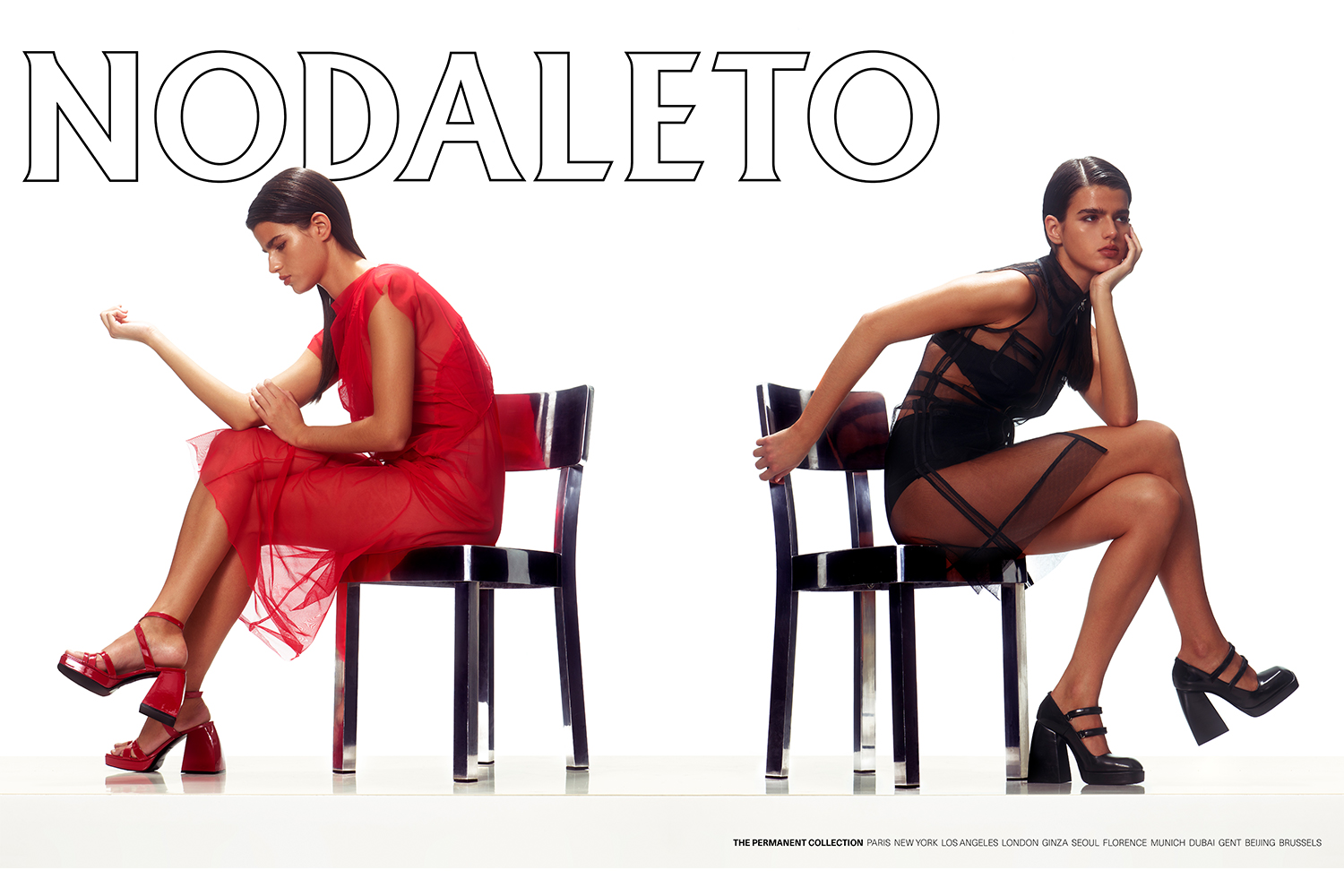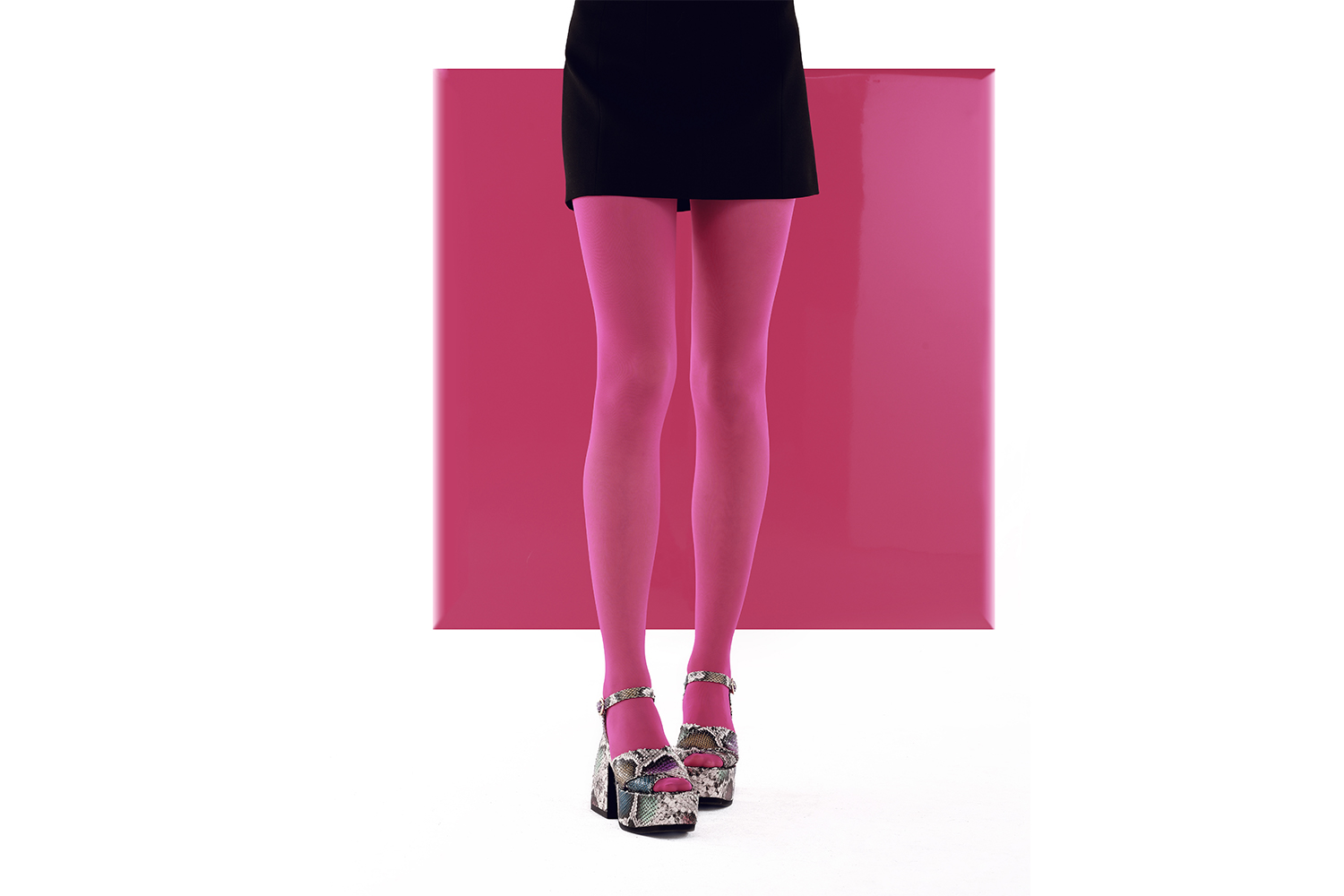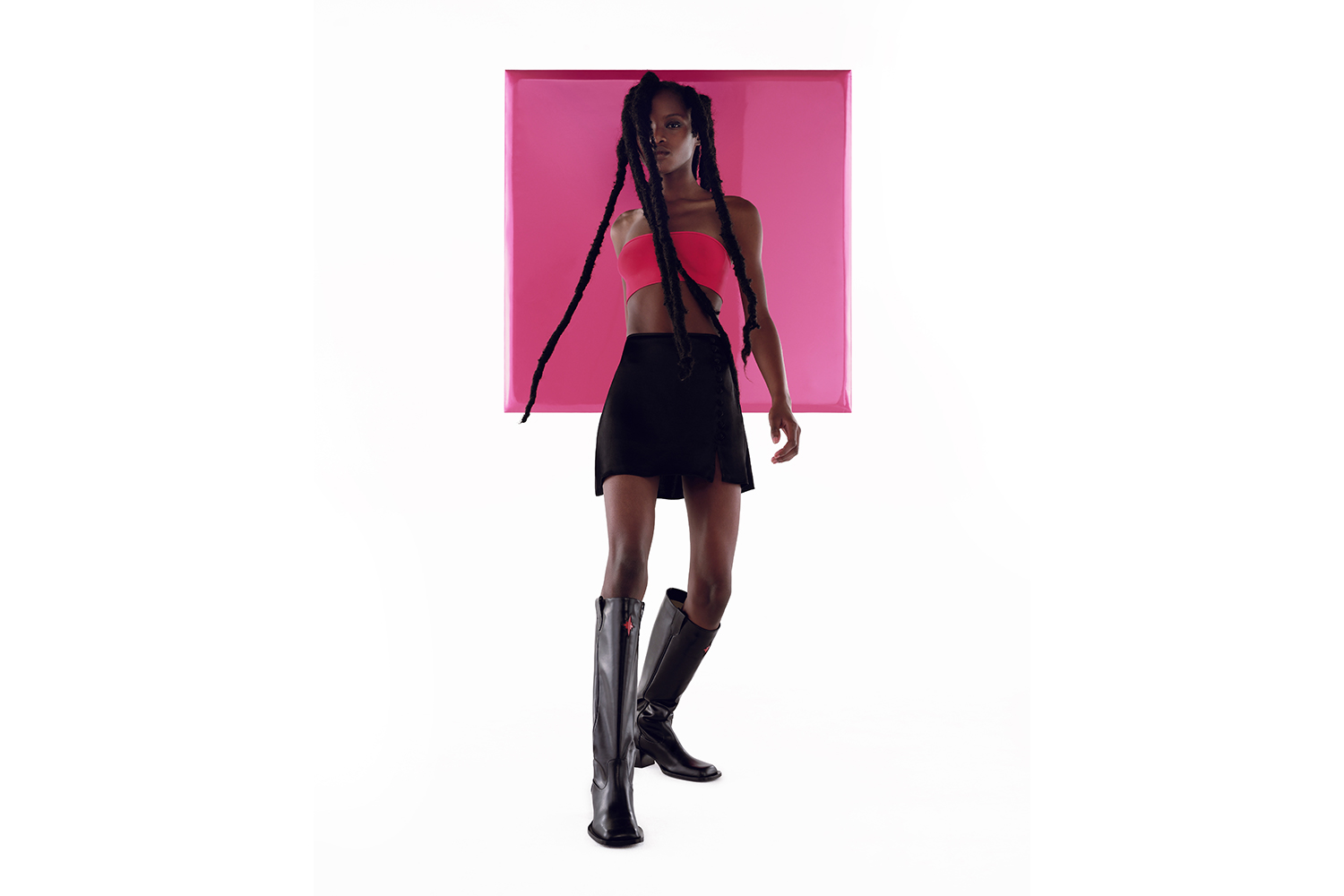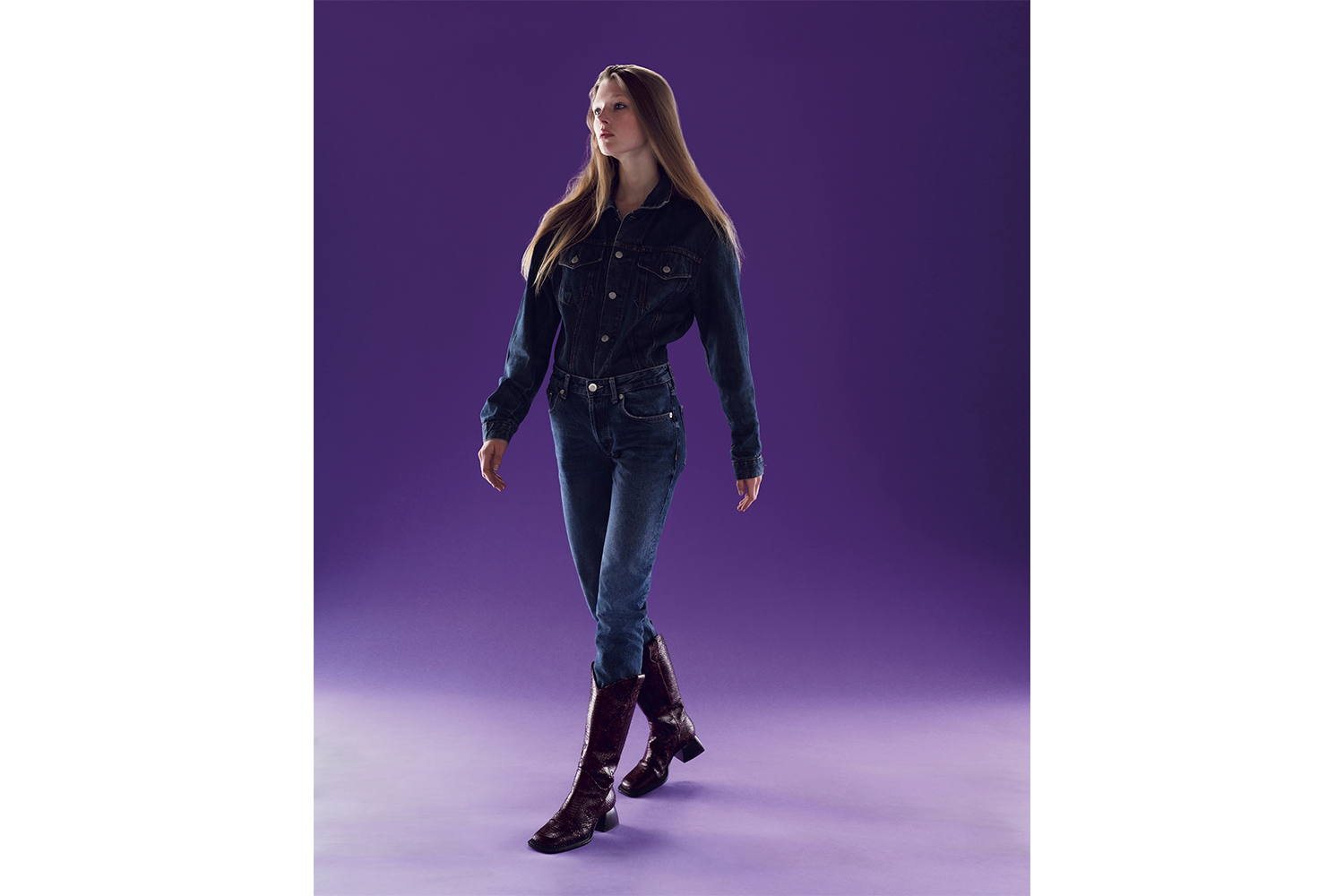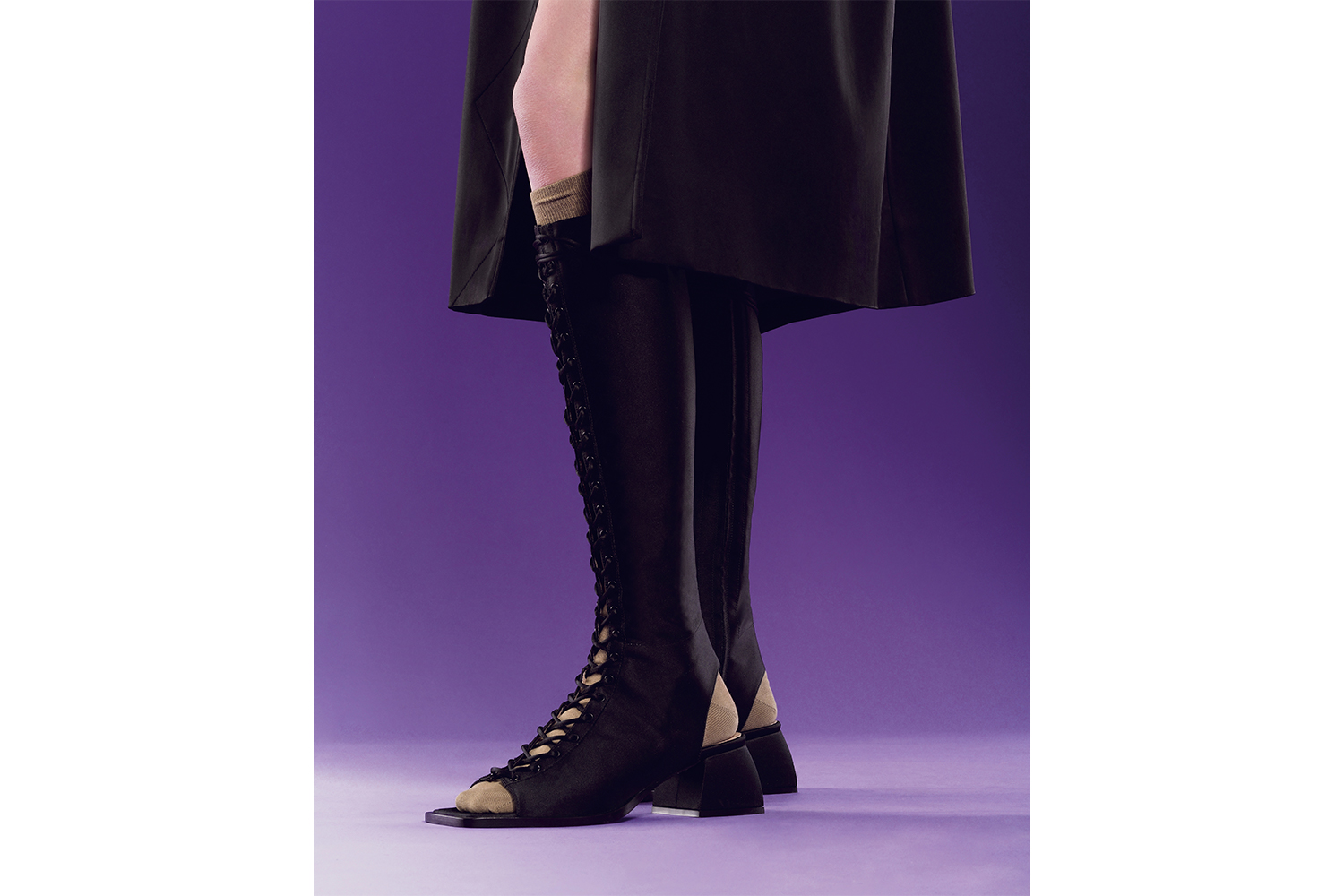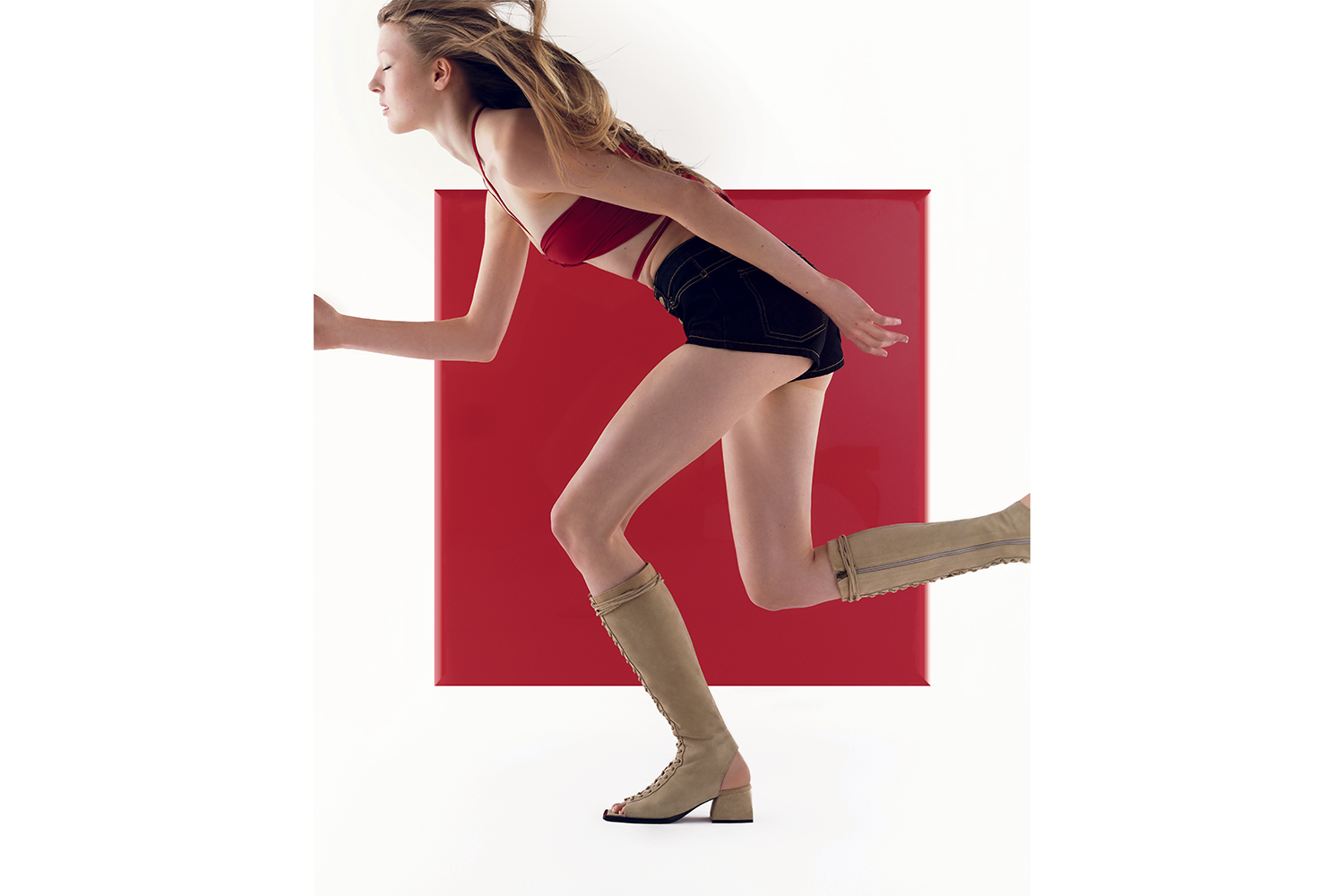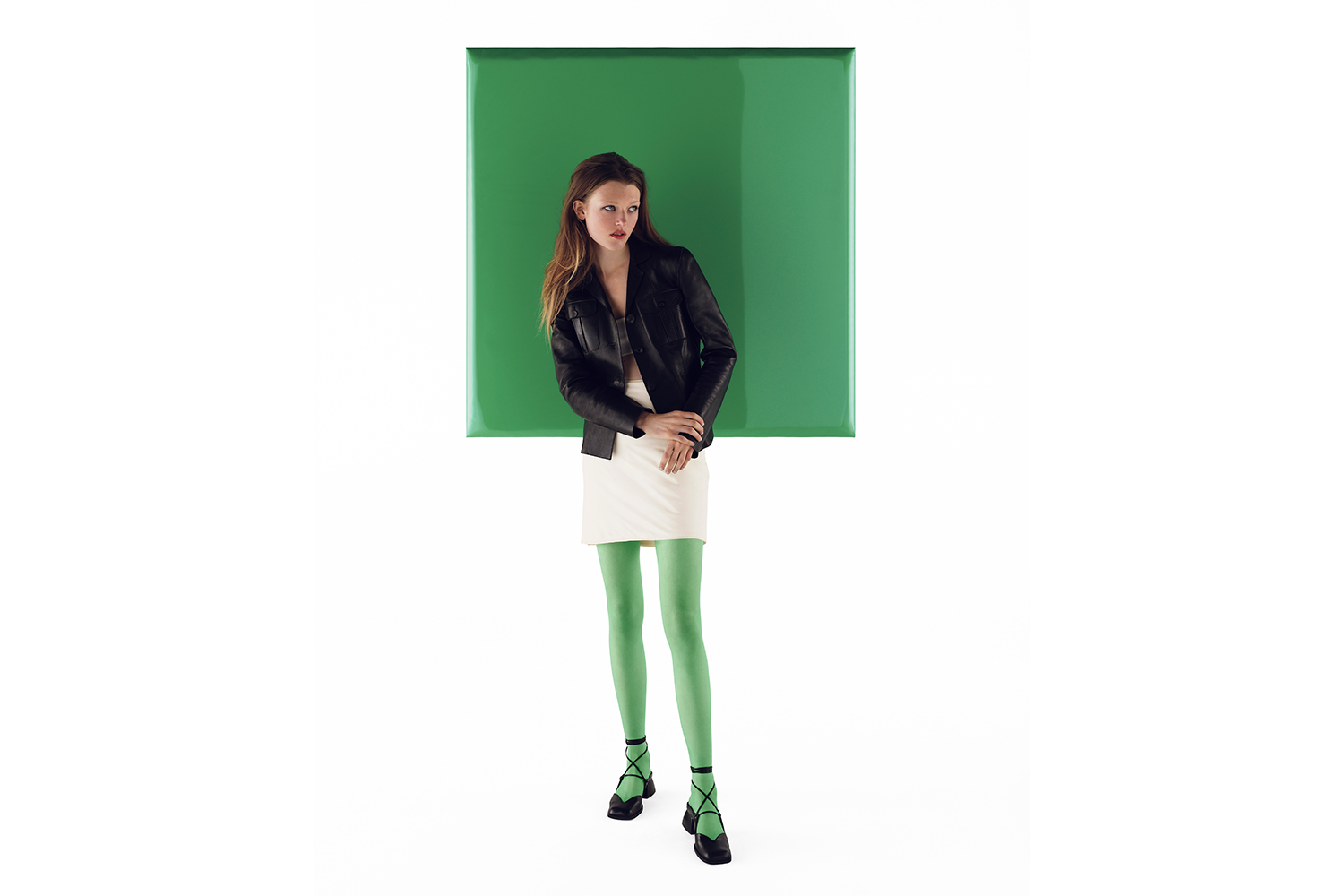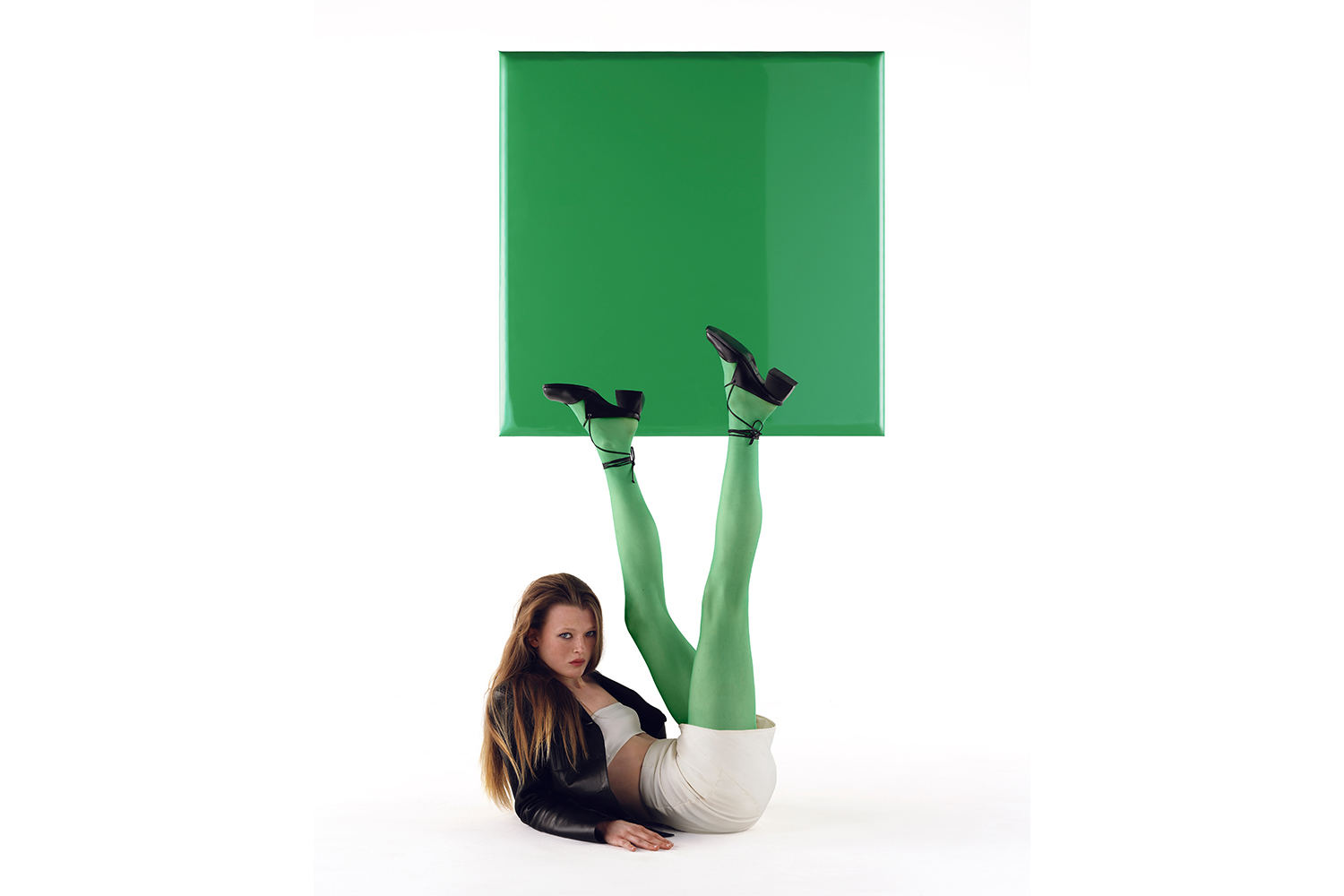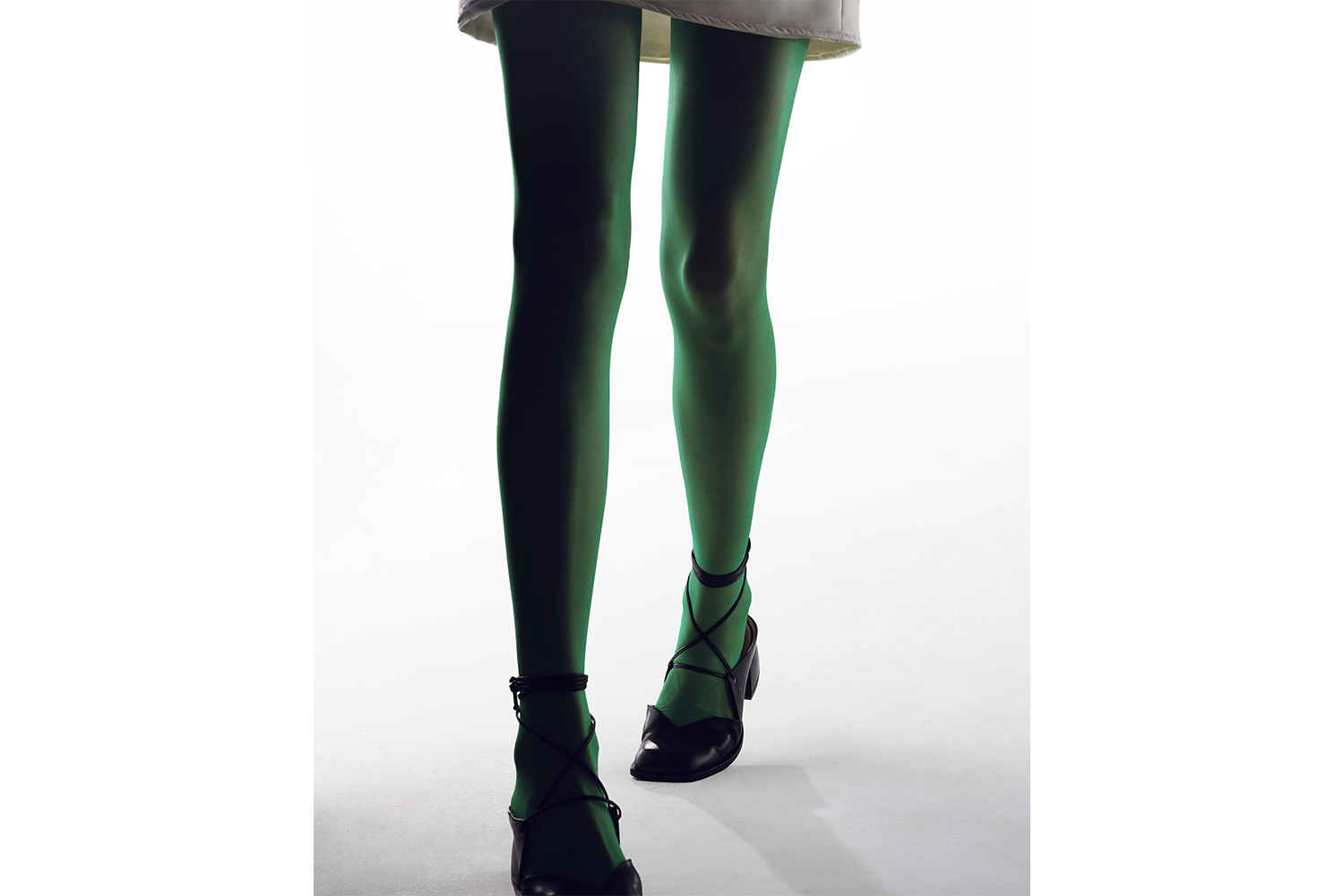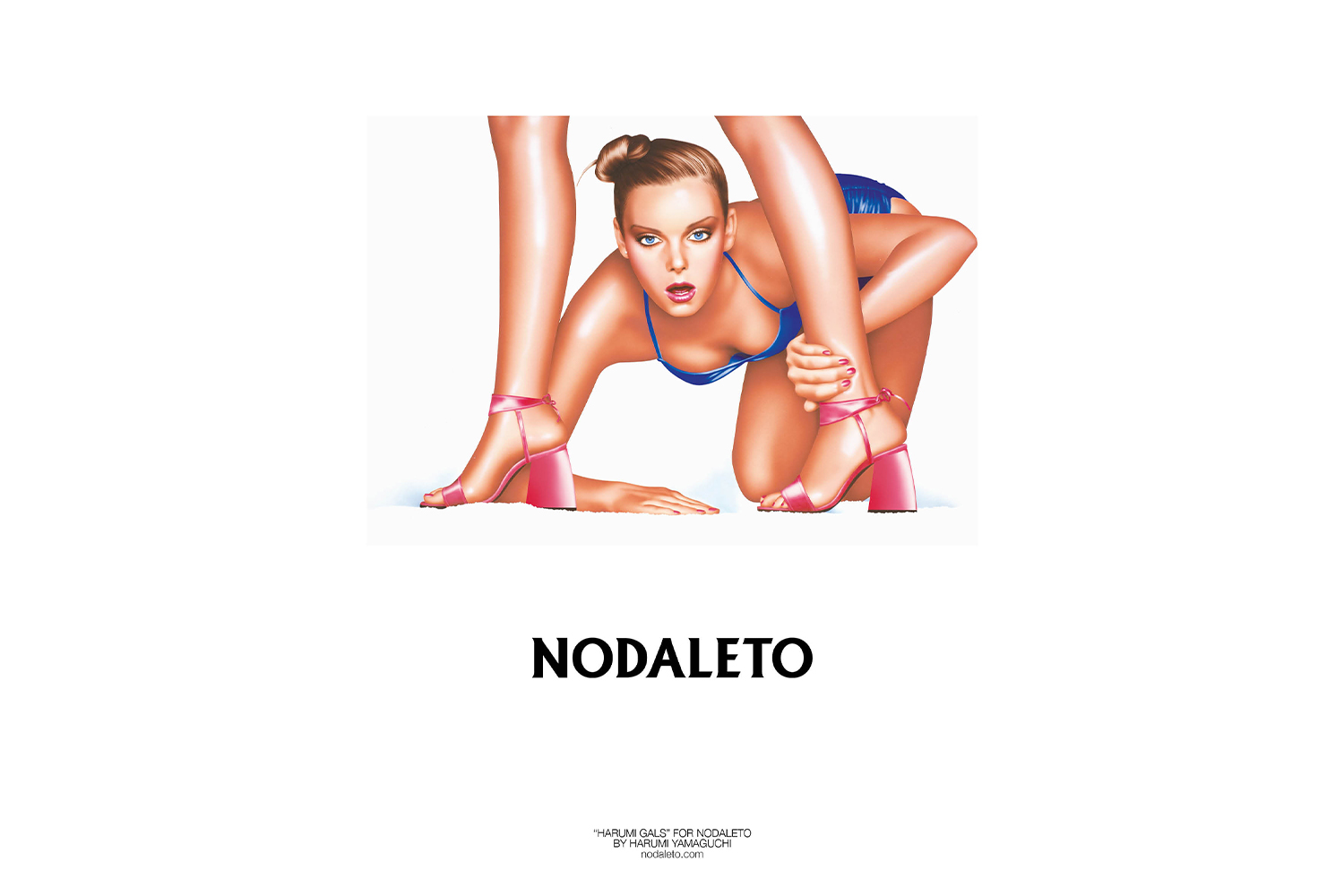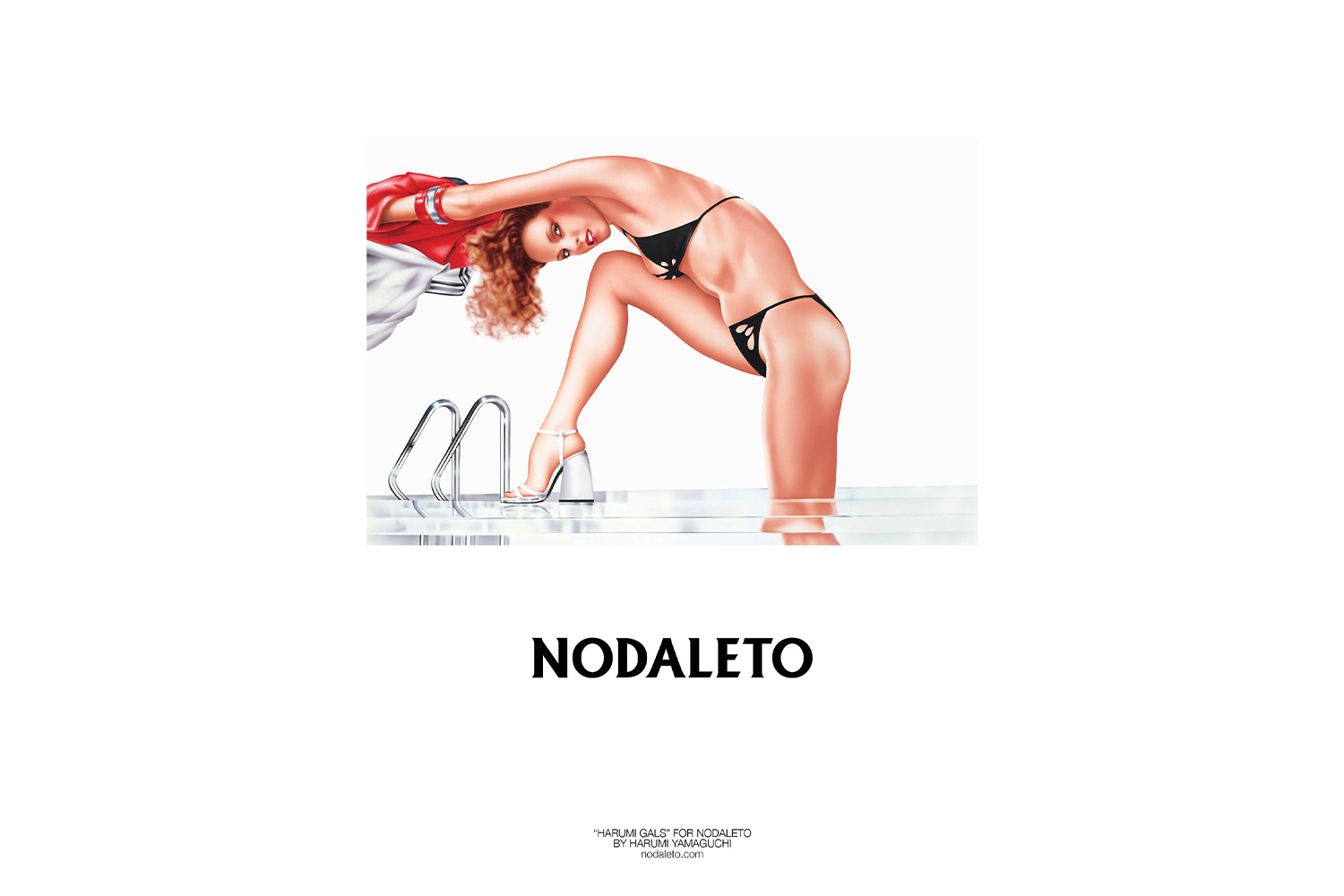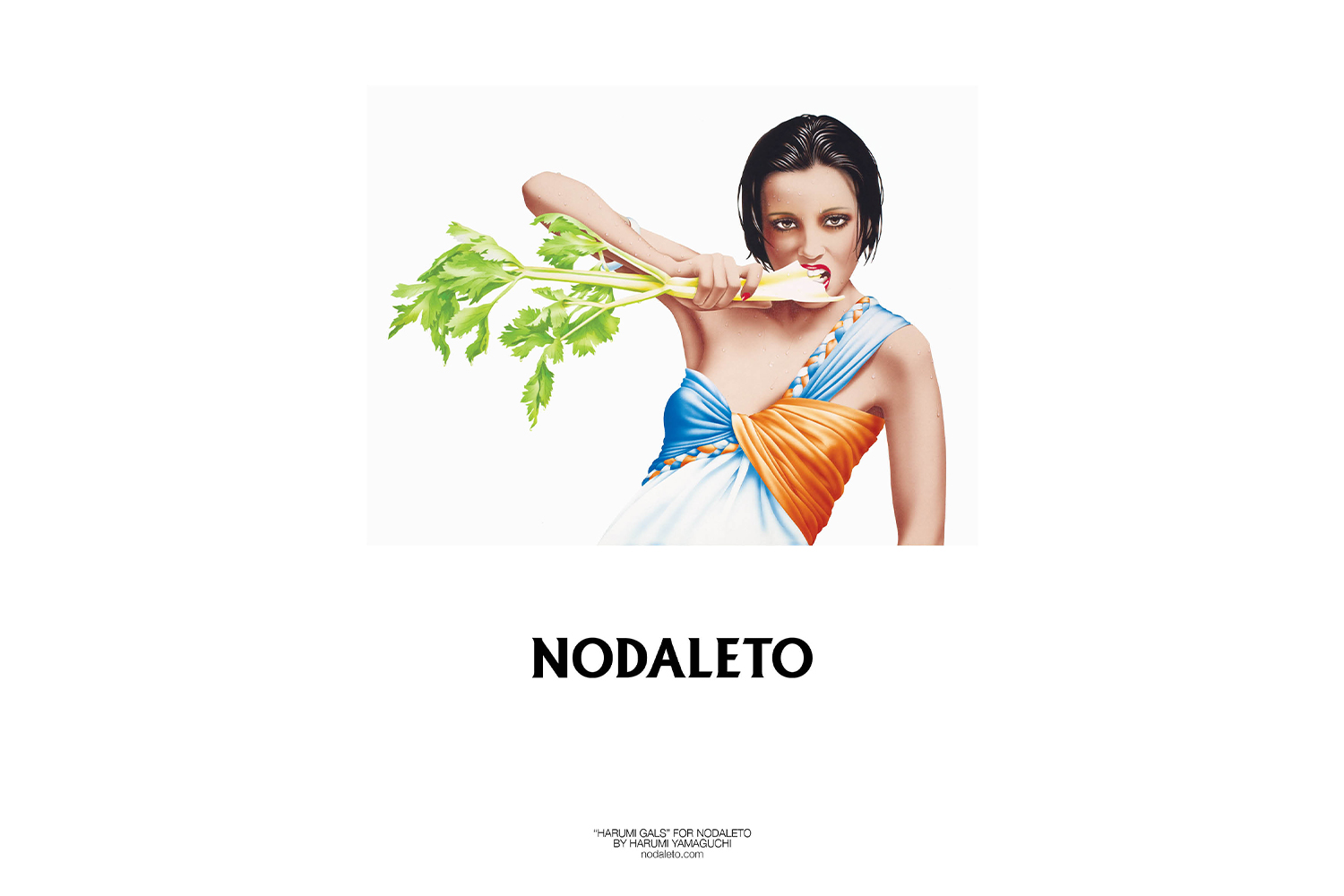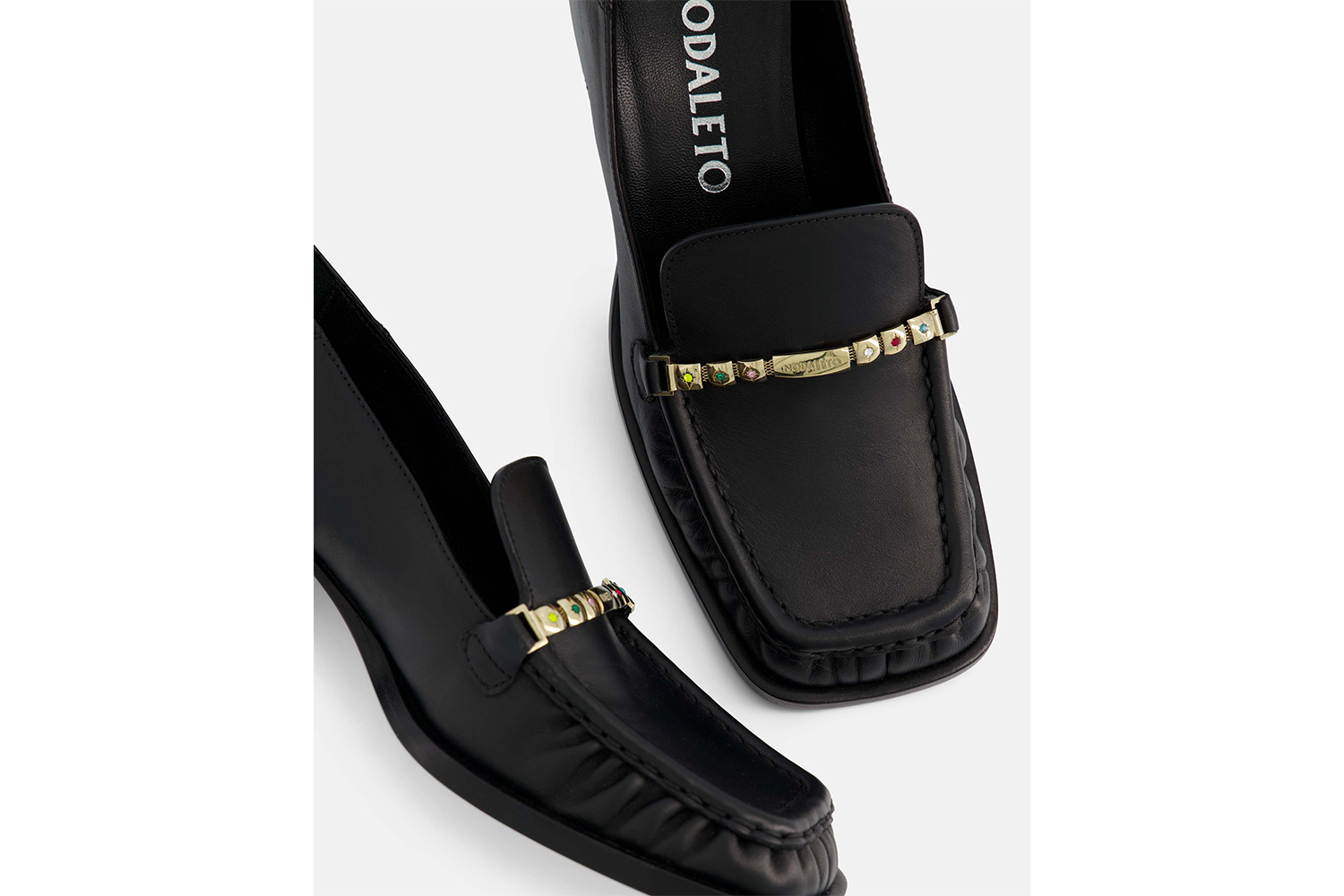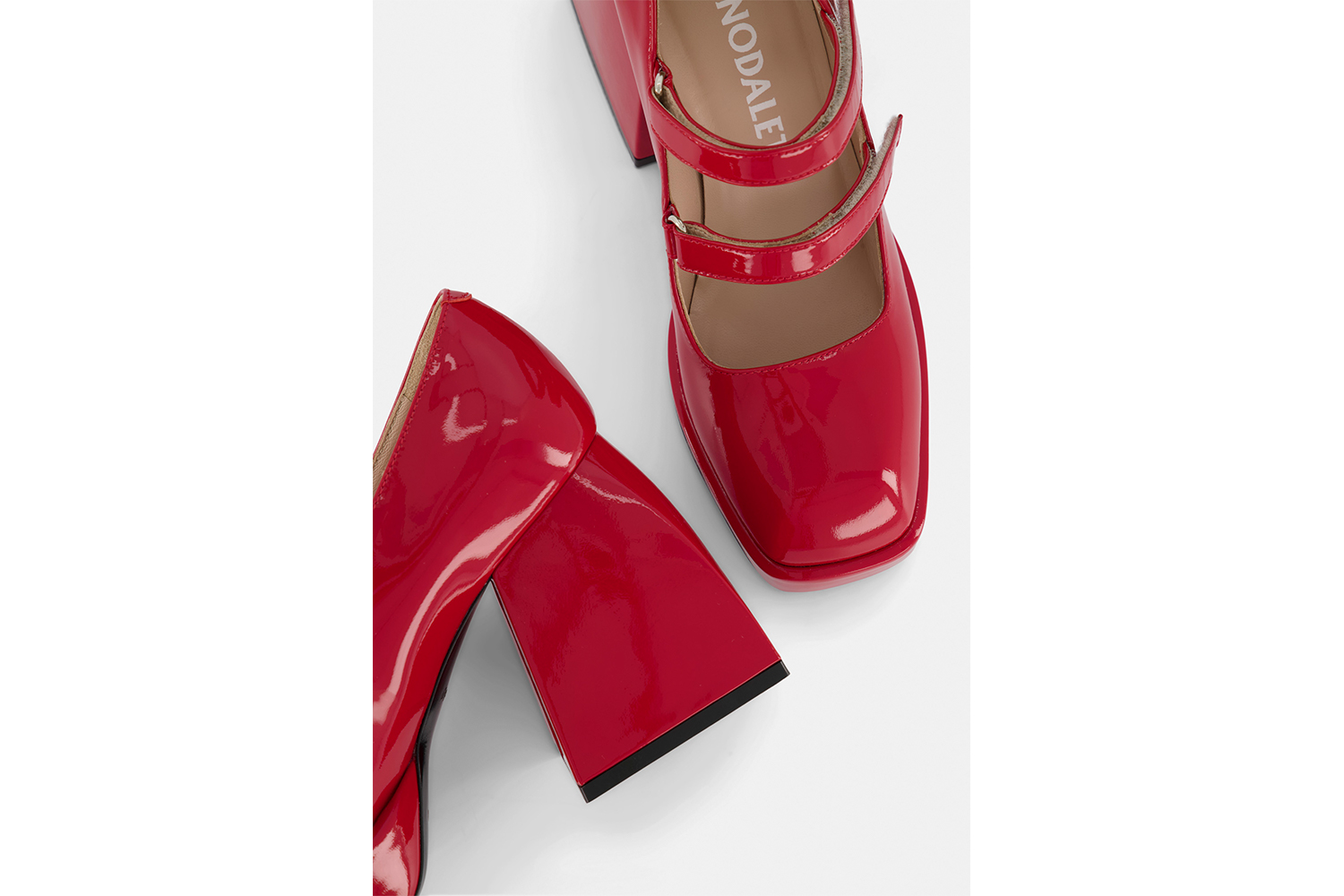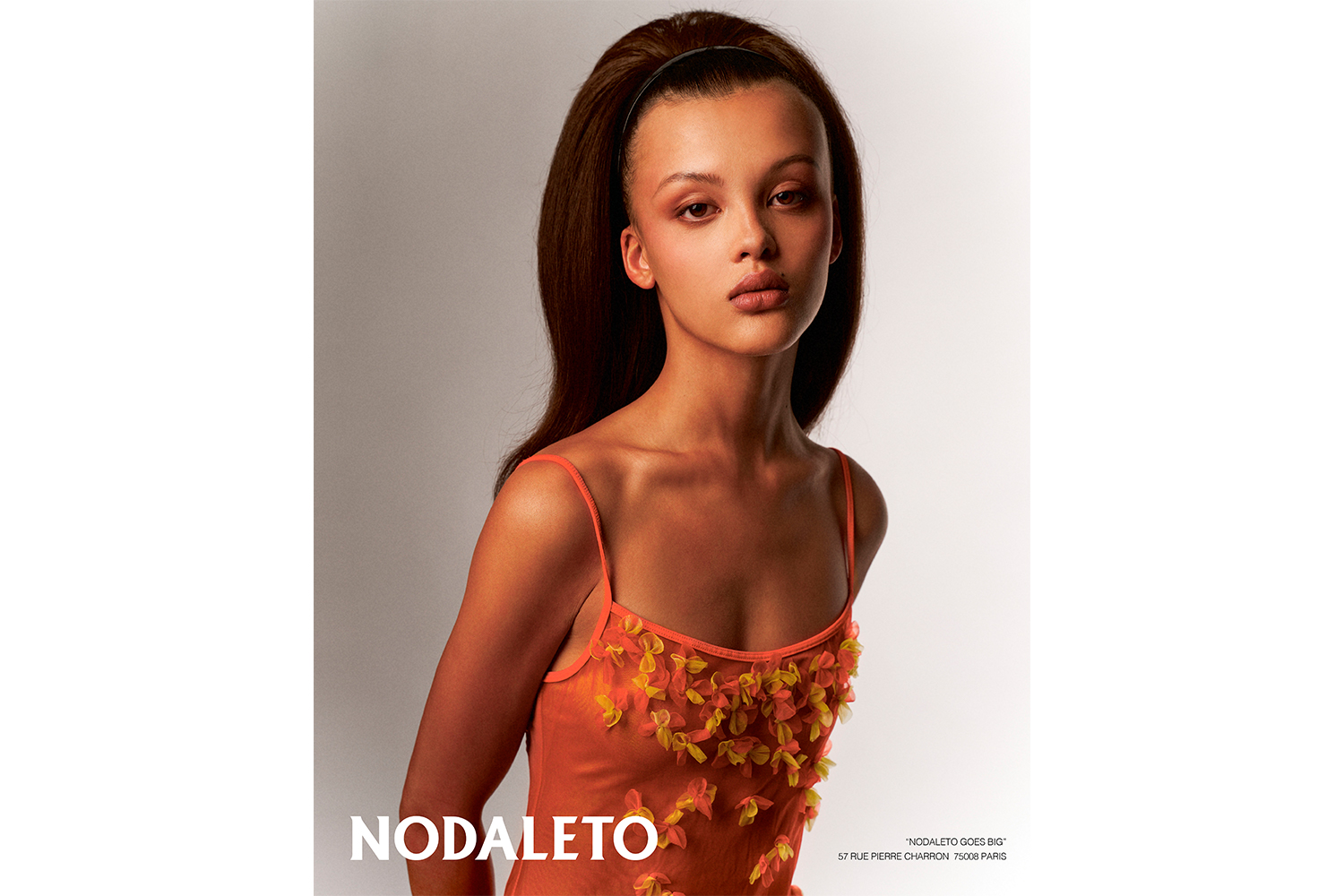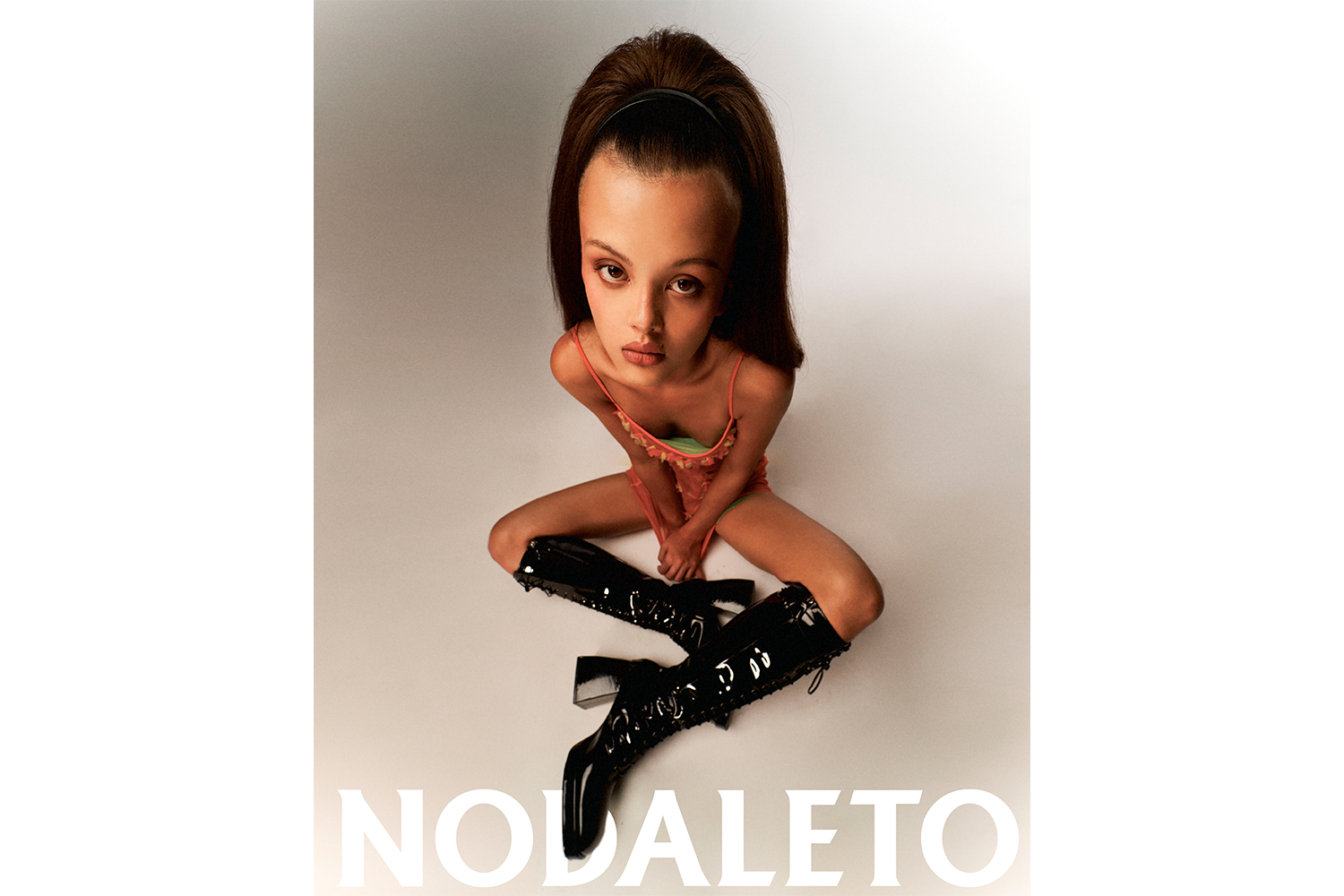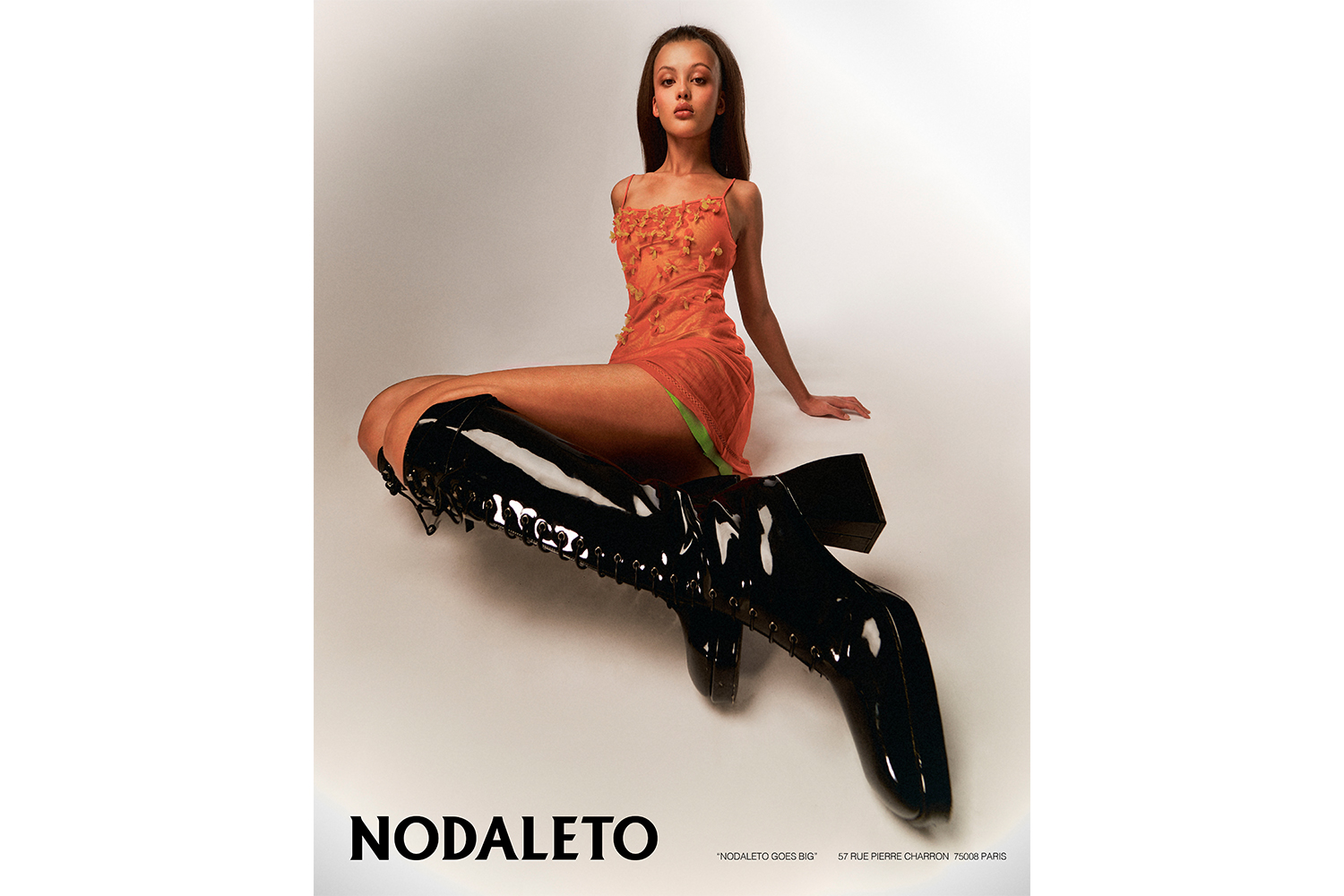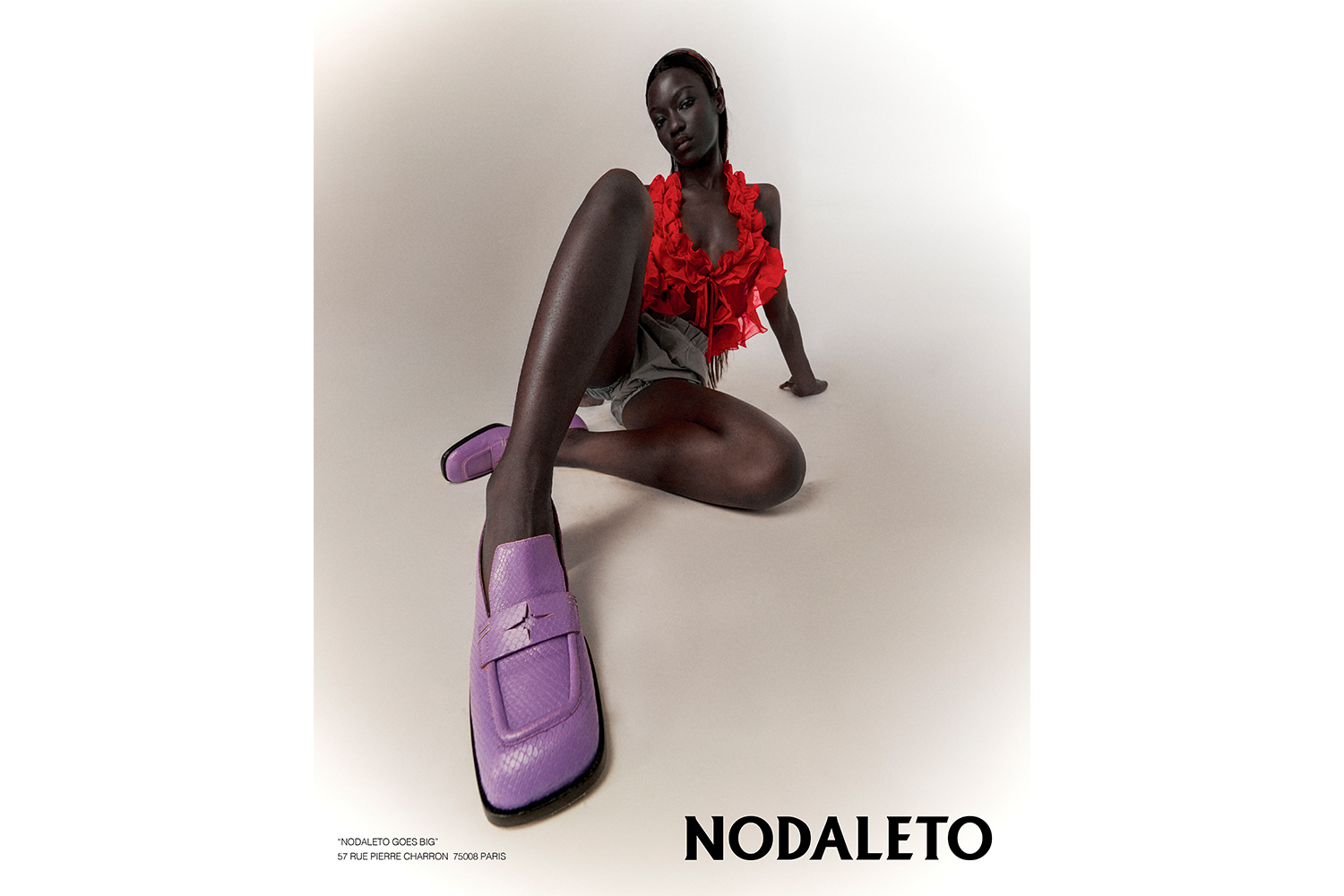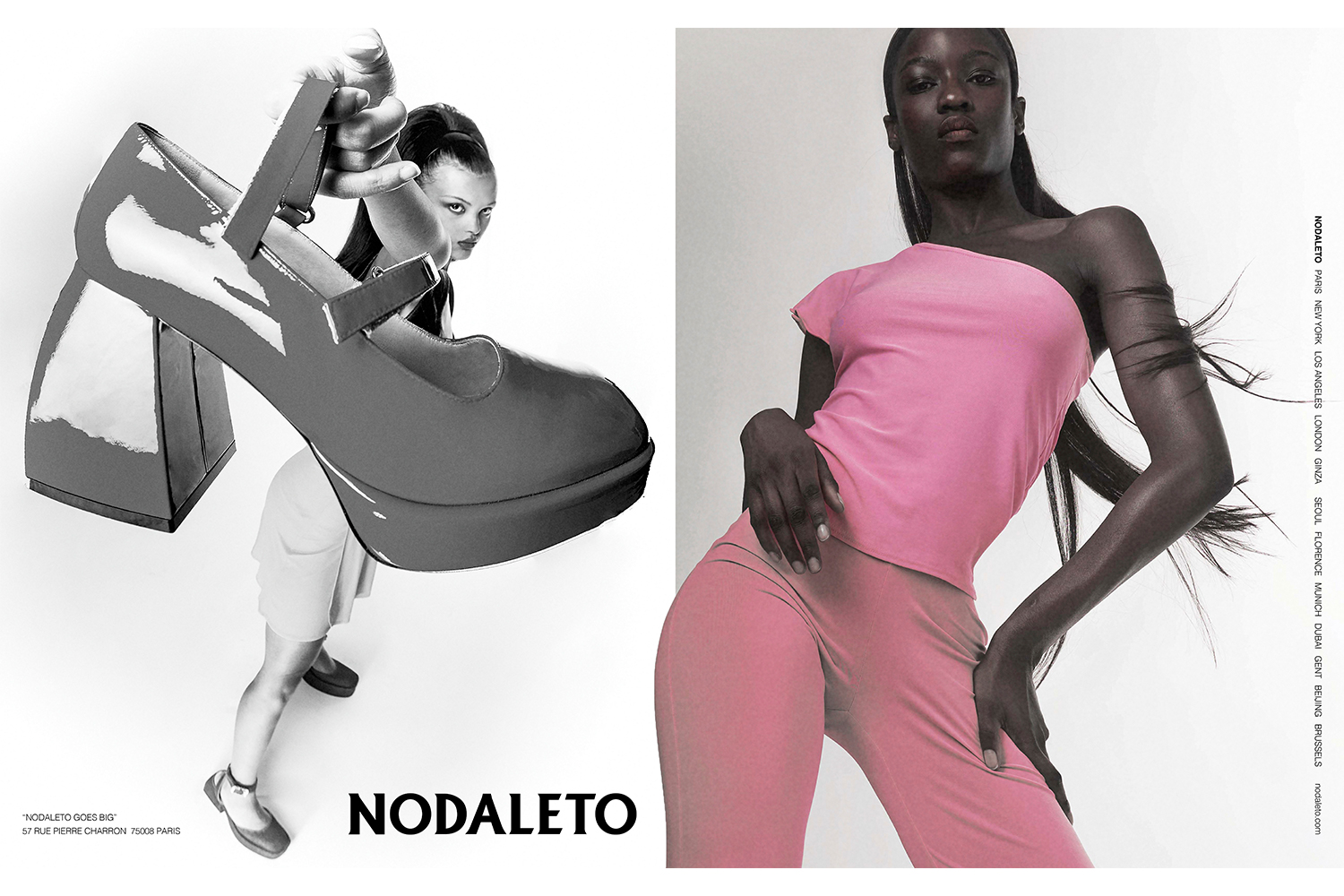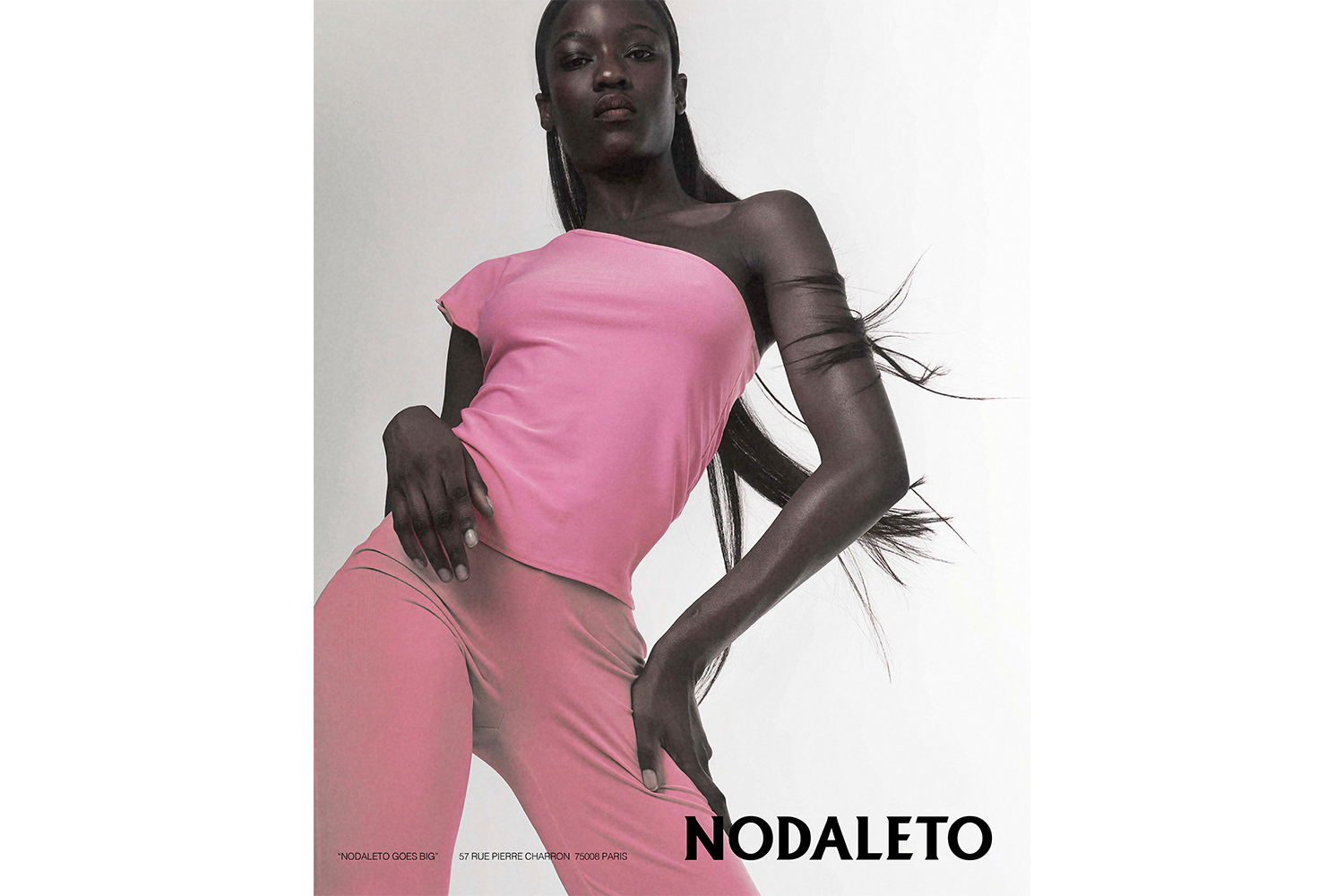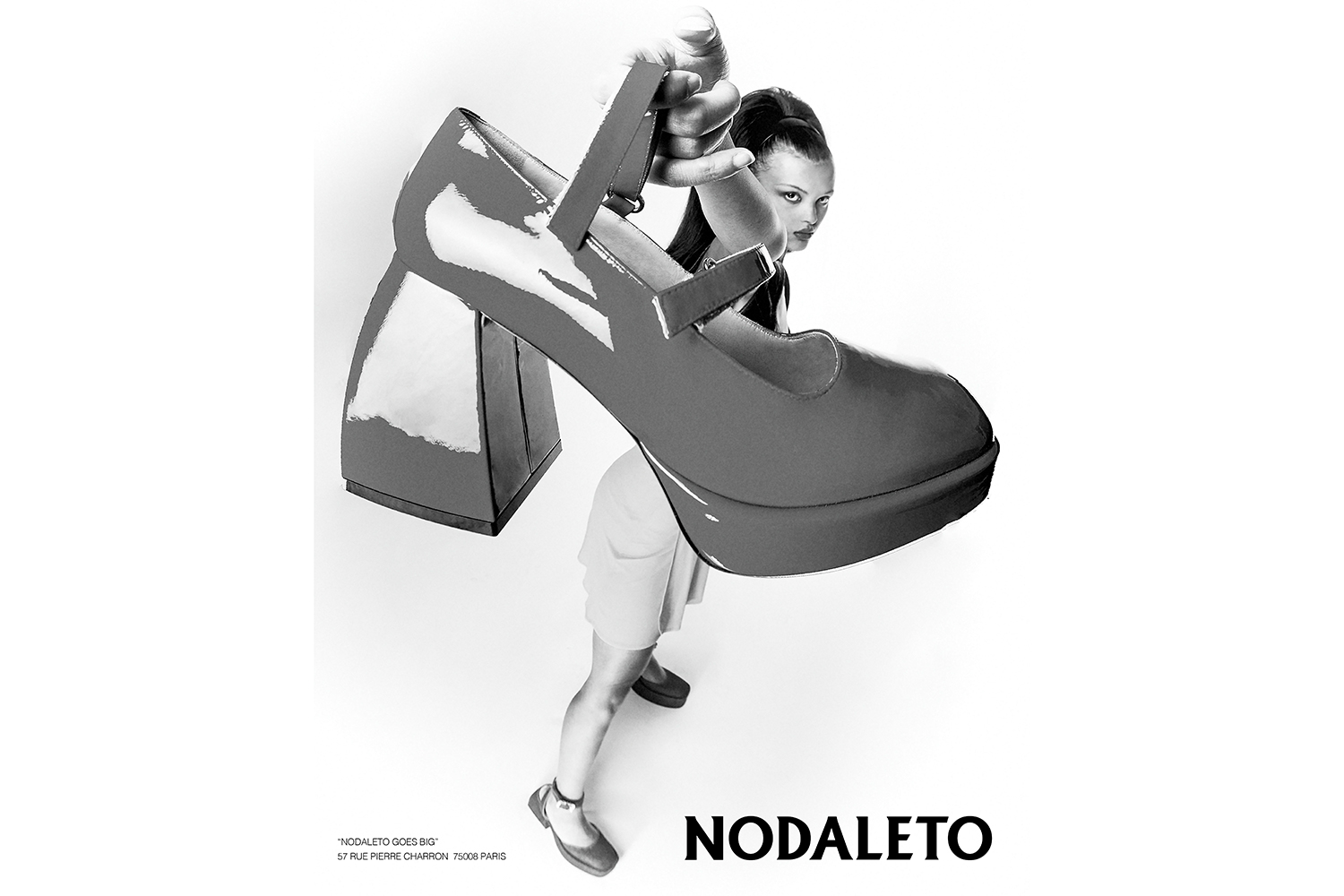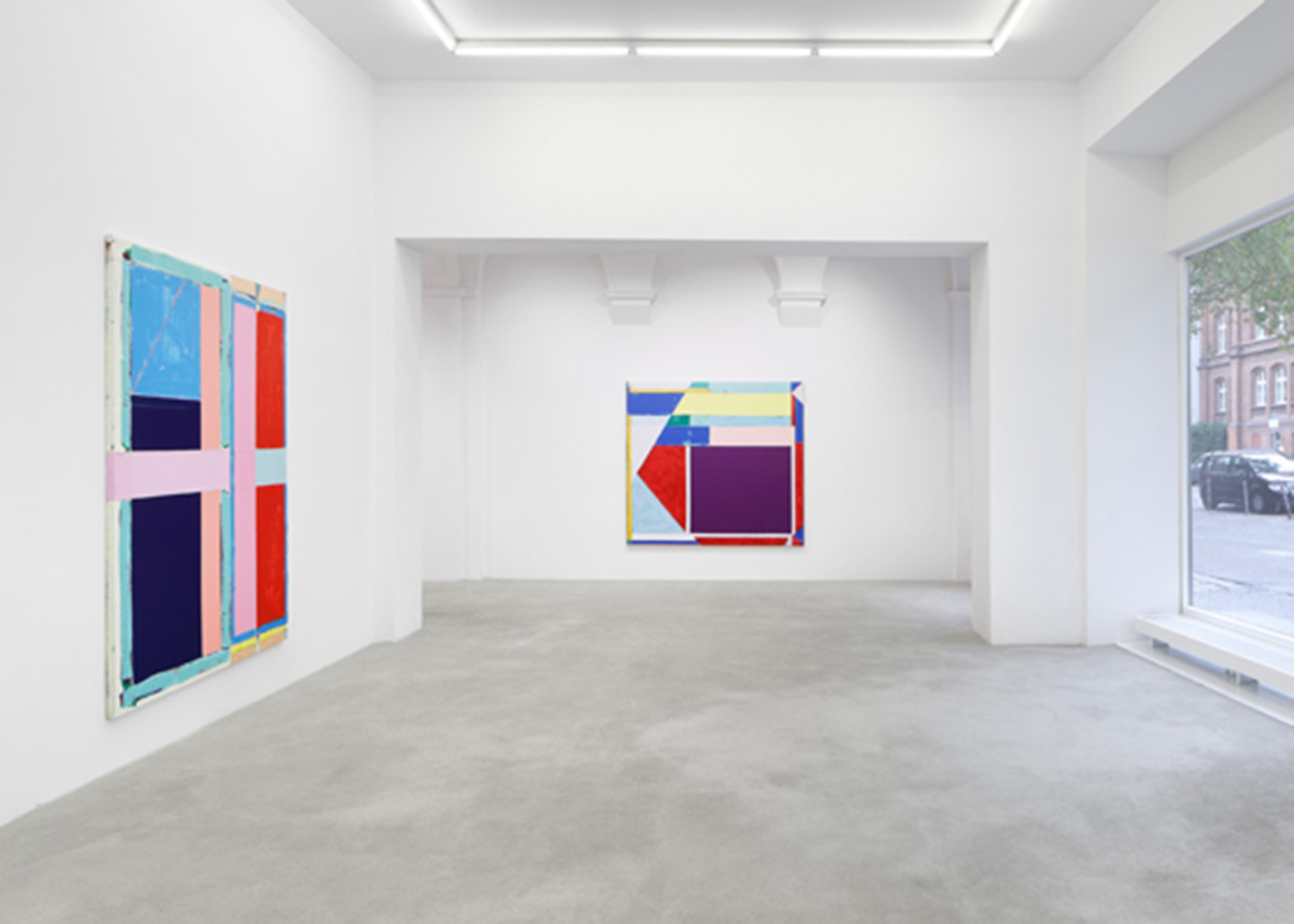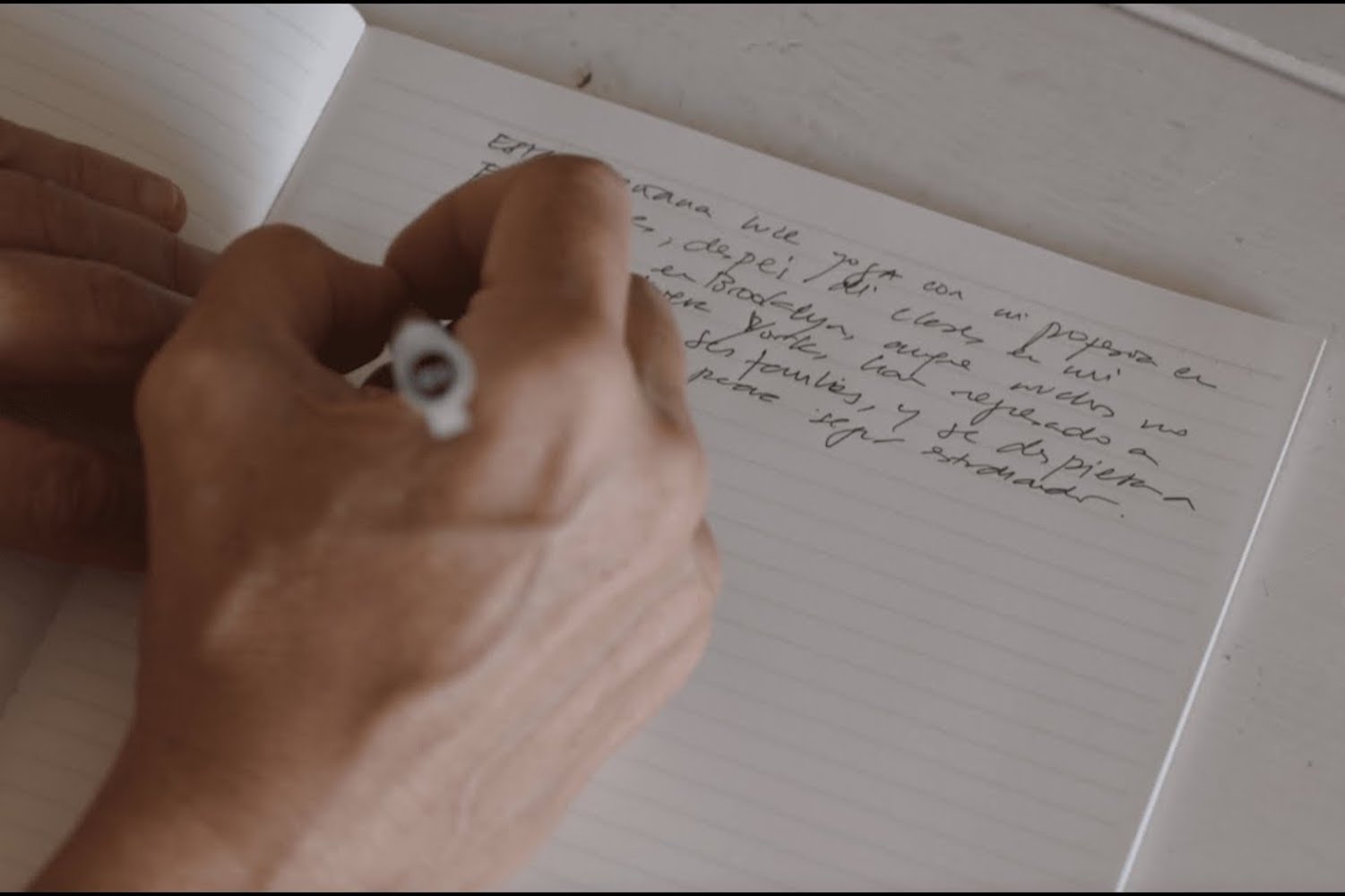A little of bad taste, grotesque-chic and a no bullshit approach make Nodaleto’s footwear a must-have among sophisticated and cultivated humans, and pretty much anyone with attitude. If Diane Arbus or Billie Holiday were still alive, they would choose Nodaleto.
Who would have imagined the world of shoes could make such a buzz? In this interview, founders Julia Toledano and Olivier Leone talk about influences, Meta-verse, and work ethics. A strong methodology and very well-defined imagery are what makes the brand successful.
Gea Politi: Your generation is highly influenced by images and references; you live in a time when reappropriation is a modern form of creativity. Recently you produced a very bright campaign called “The Square,” in which a girl visits an art show and stares at a pair of Nodaleto shoes on a monolith, while the audio guide describes the work of art. Here I see a bit of Jeff Koons, a bit of Sylvie Fleury entwined with John McCracken. How much does contemporary art impact your vision?
Olivier Leone: Well, you are not mistaken — all the references you quoted were indeed in the mood board. This campaign was part of our “Nodflix” program, which is itself a slight satire on a series we love as a guilty pleasure. This episode especially was a catalyst for different influences: John McCracken, of course, for the metal monolith, but it also echoed the monoliths found in the American desert without any explanation. I always try to imagine that the shoe, by its shape and its appearance, is like a small piece of art. We have fun blurring the lines.
There is constant self-effacement in our work. We are looking for lightness. Our visual approach has always followed an artistic philosophy. Contemporary art therefore influences our vision on a daily basis. We start from what we want to transcribe, and we very often link it to a slew of contemporary artists, often Pop. This was the case with David Hockney and the “In a Manner of” campaign, or Ellsworthy Kelly and the recent mosaic series. I read a review of the universe of Nodaleto by a young journalist, who compared our visual approach to a visit to the museum. I was really flattered because that is exactly our intention; in a playful way, we want to invite our audience to stroll between different worlds, always linked by an iconographic red thread, a tone, colors.
Finally, it opens a field of possibilities. The brand is only two and a half years old. If we are more in the lexical field of MoMA, nothing prevents us with this method from transforming and moving towards a different world again.
GP: What is the main message you want to share with your audience through Nodaleto?
Julia Toledano: A lightness of being. An ode to joy, to aesthetics, to color, to simple emotions. There is something authentic about Nodaleto, with several degrees of readability. If you dig, there is always an underlying message. It’s about self-acceptance, sexuality, doubts. But it’s still a fashion brand, so you shouldn’t take yourself too seriously either.
GP: What kind of research are you working on for the next season and why?
OL: For the new campaign we wanted a pretty rock ’n’ roll spirit, with big solid Steven Shearer colors. This resulted in a series of strong movements against a chromatic square background in vinyl.
GP: TV series are a significant part of your campaign imagery. Has there been anything that struck you visually and content wise that you wished you’d thought of before its release?
OL: I guess, like many people, The Simpsons show with Balenciaga. It was perfectly put together from start to finish. The issue when playing with pop culture is to not distort the purpose or the product. Here, the red carpet, the way it was presented, brought about an overall bond that I found quite amazing.
Nothing was too much. Balenciaga understood that the audience’s time to concentrate has dramatically reduced. You have to hook them right away. Our parents were afraid of a “zapping generation,” but the TikTok generation is that times a hundred. From the very first seconds you have to captivate them, get the message across, and talk about the product — otherwise you are swiped.
The swipe generation has replaced the zapping generation. The remote control button became the phone screen, and TV series replaced movies.
I tell myself that sometimes it’s sad, but rather than being pessimistic, I see the glass half full and prefer to integrate these new codes into the brand’s DNA. So, yes, we are a brand that was bottle-fed by MTV but are looking to the future.
GP: Nodaleto is an entirely digital-based company. Its audience is mainly millennials. When you started the brand, did you have a clear idea of which audience you wanted to track?
OL: We are not really asked that question. Julia just wanted to design shoes that she couldn’t find elsewhere, and the echo with our generation came naturally. At first we were probably more millennials, now maybe a little more Gen Z.
For the years to come, we have set ourselves the goal of being able to speak to a broader generational spectrum. All the codes are not yet written: the coming seasons reserve surprises, undoubtedly more mature.
GP: When was your last collaboration with an artist?
JT: Our last collaboration with an artist was with Harumi Yamaguchi, a year ago. It was an accomplishment for us as we admired her work, which started with advertising design.
We obviously have a list of artists that we would like to work with, and an ongoing collaboration, but it’s going to take a little while and we can’t say more. One of our dreams would be to work with the Warhol Foundation, as Raf Simons was able to do.
GP: We live in a world of images consumed daily by viewers. How do you work toward “leaving a mark” through images?
JT: We take risks. We sometimes let ourselves be tempted by a little bad taste, slightly.
An image that stays in mind is an image that provokes immediate emotion. We always try to bring different levels of reading for different people. While some will see just one shot, others will see it as a subtle tribute to an artist.
The subliminal is a constant in our iconography. We take great pleasure in being falsely naive.
GP: Performance plays a big role in daily life, especially post-Coronacene. We use video as a main communication tool. Are you thinking of moving more toward that direction? Perhaps completely?
OL: It’s funny you ask that question. Maybe our next season will be all about video.
This is a big question because it challenges an entire industry, especially on the need to always create more, but also the role of the photographer.
After almost two hundred years of existence, the role of the photographer is set to evolve again. The way in which brands are gradually starting to use 3D as a regular tool and no longer a gadget, the introduction of the metaverse, the creation of new social networks — these have exploded the regular need for content and led us to ask how to communicate.
What is certain is that it is about taking risks and trying things. However, our duty as a brand is also to support more “classic” creations and photography. In this respect, I think we like the statement of being occasionally frozen, like a book, via simple, strong, and meaningful images.
GP: Who do you think wears Nodaleto? Give us an identikit of “your people.”
JT: We just released a book about our clients and their Instagram posts with artist Karl Hab. So we were able to answer the question. It was kind of a tribute to the different girls and women who represent the brand. Quite frankly, there is no typical profile. No doubt at first she was a very fashionable woman who was not afraid of statement pieces. She often wore archive-type Miu Miu, Prada ’90s, or Helmut Lang, and loved the ’70s too. But today the spectrum is so wide.
We have the new generation for whom this is their first designer piece and who has saved up to buy; the fashionista looking for the latest trend; the more classic woman who loves the moccasin…
There are no more typical clients, and that’s the beauty of this project.
GP: Where will you be in 2031?
JT: This is a very difficult question. Not because we don’t have dreams, but because the world is moving too fast to respond.
The goal is to always be a translator of one’s time and to live with it, meanwhile keeping the codes of luxury and highlighting the importance of the manufacture.
Continue to talk about dreams. Maybe just new ones.
GP: What is one of the most important aspects of Nodaleto that people do not see? Sustainability, gender, ethical labor…?
JT: The difference in profiles within the brand.
What strikes people when they come to the office is seeing all these very different girls working together. Fashion brands tend to standardize their employees unintentionally, because they are united around the same aesthetic. At Nodaleto, profiles, even creative ones, are very heterogeneous. And this reflects a desire to speak to a spectrum of different women. As a CEO, I’m really proud of that. There is a kind of sorority in the brand which is very important to us.
Finally, we obviously have ecological and ethical commitments in our daily lives. We are trying to produce more and more vegan models with always a lot of traceability. But it’s not about thinking it’s important: it’s simply normal. It would not be serious to not be in this process. There are no other options to being ethically responsible today. If you are not, you are outdated.

